Alert+
Evacuations from High-Risk Locations Call +44 (0)1202 308810 or Contact Us →
Cyclone Chido: Mayotte, Comoros, and Mozambique Face Crisis
Intelligence cut off: 12:00 GMT 16 of December 2024
On 14 December 2024, Cyclone Chido hit the French Overseas Territory of Mayotte in the Indian Ocean. Cyclone Chido is considered the most severe cyclone to hit the region in almost 100 years, making landfall in Mayotte at Intense Tropical Cyclone strength with maximum wind speeds exceeding 225 km/h (139 mph).
At least 14 fatalities have been recorded; however, authorities currently assess that the death toll could reach 1000 with thousands more displaced. Hundreds of homes have been destroyed and several government buildings have been severely damaged, including Mayotte Hospital and multiple medical centres have been rendered non-operational.
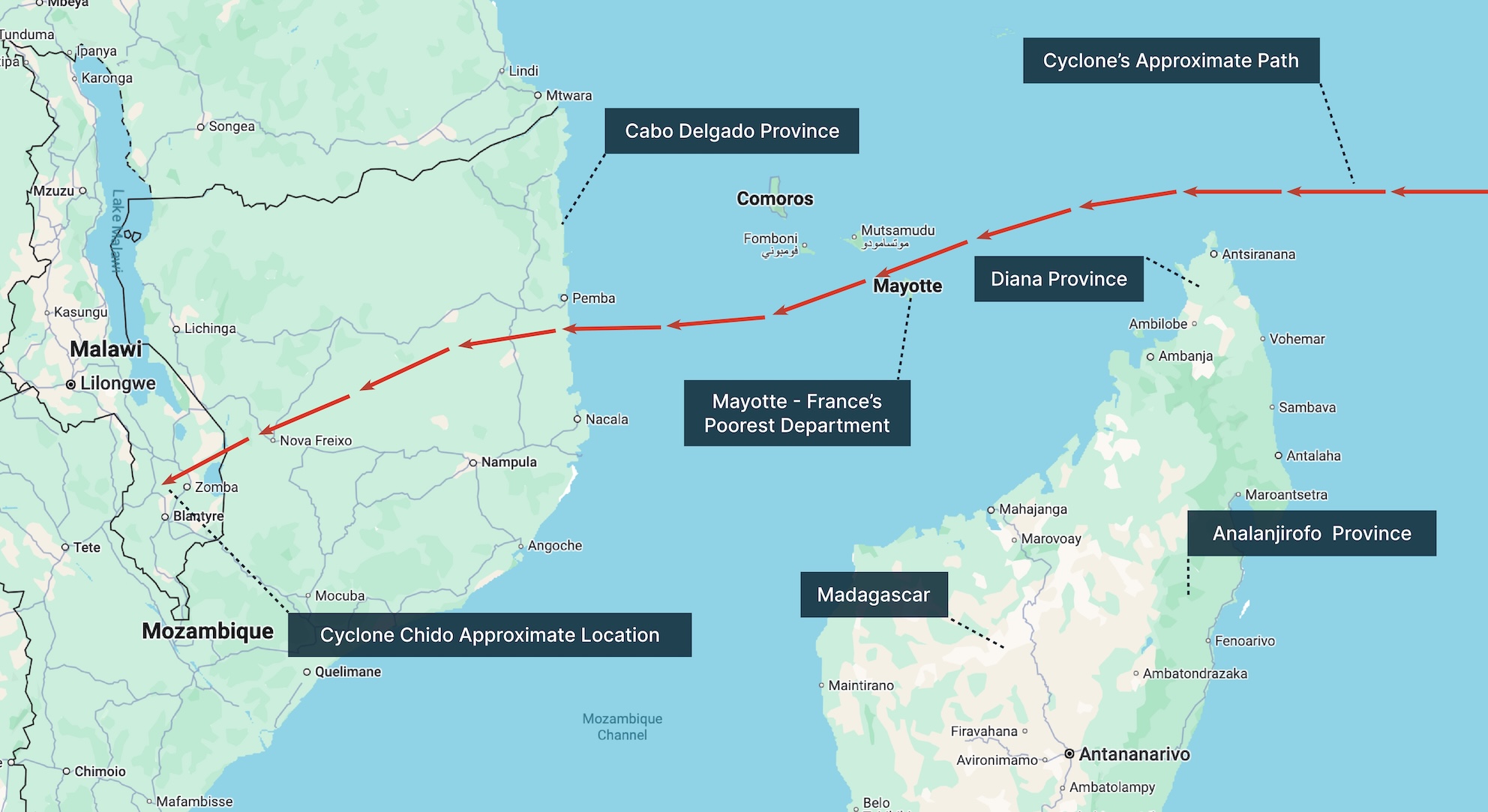
Cyclone Chido Path
In Comoros, storm surges caused by Cyclone Chido resulted in widespread flooding in the capital Moroni and other coastal towns. Flooding has damaged multiple homes, businesses, fishing infrastructure, and roads, disrupting transport and delaying emergency responses.
In Madagascar, the northern regions of Diana and Analanjirofo regions were primarily affected by flooding, resulting in damage to transport infrastructure, homes and energy infrastructure, leading to blackouts.
Cyclone Chido made landfall in the Cado Delgado province in Mozambique early 15 December, threatening 1.7 million people. The storm damaged or destroyed homes, schools, and health facilities, and numerous flights were cancelled at Pemba Airport. Cabo Delgado has reportedly experienced large-scale internet disruptions caused by the storm. Authorities have warned of potentially having to evacuate low-lying areas.
SOLACE GLOBAL COMMENT
Cyclone Chido Recovery: France Mobilises Rescue Teams for Devastated Mayotte
Recovery efforts are ongoing in Mayotte and the death toll is almost certain to rise. France has mobilised rescue teams and supplies from mainland France and the French territory of Reunion, with 160 firefighters and soldiers being sent to Mayotte to bolster the 110 French military personnel currently undertaking rescue operations. The immediate effort of French rescue teams is to establish an air and sea bridge to Mayotte to facilitate the delivery of humanitarian aid.
There are severe transport disruptions in Mayotte, including mass flight cancellations at Dzaoudzi Pamandzi International Airport (DZA), which has been subjected to significant levels of damage. The French interior ministry is set to host a crisis meeting on the situation to determine response. Travellers to the area should expect mass disruption to healthcare provision and significantly slowed emergency response times.
Due to the intense rainfall in northern Mozambique, there is a high risk of landfalls. Furthermore, authorities have indicated that communities may be cut off from schools and health facilities for weeks due to damaged infrastructure. Mozambique’s meteorological agency has issued warnings for multiple provinces due to strong and dangerous winds until midnight on 17 December.
The storm weakened into a moderate tropical storm then a remnant low on 16 December as it tracked into Malawi. As of 16 December, sustained windspeeds have reduced to approximately 50 km/h (31 mph). Malawi is unlikely to be significantly impacted by the storm, but transport-related disruptions cannot be ruled out.
SOLACE GLOBAL ANALYSIS
Storm Damage Likely to Trigger Unrest as Mayotte, Comoros , and Mozambique Grapple with Recovery
Areas that Tropical Cyclone Chido has affected will almost certainly experience transport disruptions. Mayotte’s only international airport has experienced major damage, making it difficult for authorities to restart operations. Damage to infrastructure in areas affected by the storm may affect recovery efforts and will almost certainly exacerbate health and poverty issues in the coming weeks. Death tolls will almost certainly continue to rise as authorities confirm casualties from the storm.
Mayotte, a French overseas department, has experienced significant political tensions driven by illegal migration and economic frustrations. Its high levels of poverty and crime alongside overwhelmed infrastructure from the high numbers of migrants make it France’s poorest department. The French government has recently attempted to revoke birthright citizenship, changing Mayotte’s constitution and conducting mass deportations, a highly controversial move.
The damage from the tropical cyclone is highly likely to exacerbate tensions by further straining Mayotte’s infrastructure, damaging its crops, and pushing more residents below the poverty line. As such, Mayotte’s population may direct its anger against the ruling authorities and conduct significant social unrest to express their frustration.
In Comoros, resources are generally strained. Deforestation and coastal erosion have caused significant damage to local communities and approximately 40 per cent of the population lives below the poverty line. The cyclone has caused significant damage, which will almost certainly further disrupt local communities and strain government resources, displacing many. Agriculture, which accounts for over 35 per cent of employment, will likely be affected by damaging winds and flooding, pushing more residents below the poverty line. Parliamentary elections are set to take place in Comoros on 12 January 2025. The damage inflicted by the storm is highly likely to exacerbate tensions, which are already high and may contribute to unrest in the country.
In Mozambique, the cyclone has affected the Cabo Delgado region, an area experiencing an ongoing insurgency. Moreover, significant unrest regarding the October election has been ongoing in the region. As such, the government’s ability to commit resources to the areas affected by the cyclone will highly likely be significantly hindered. While the coming days may see reduced unrest as communities seek immediate safety in the aftermath of the cyclone, unrest in Pemba will likely increase in the coming weeks.
Travel Risk Advice: Precautions for Cyclone Chido-Affected Zones
- Closely monitor local news reports and government alerts.
- Adhere to all instructions issued by the authorities.
- Follow evacuation orders and travel to government-designated shelters if it is safe to do so.
- Do not return to your residence until authorities have declared it safe.
- Ensure that important documents and medications are stored in a waterproof container.
- Maintain communication with an emergency contact and conduct regular check-ins.
- Prepare an emergency “go bag” with essentials such as bottled water, batteries, important documents, and medications.
- Confirm that booked flights are operating before checking out of hotels or travelling to the airport.
- Prepare for power outages, communication disruptions, and travel delays.
- Due to the risk of flooding, avoid low-lying coastal areas and locations near bodies of water whenever possible.
- Stay away from damaged buildings and affected areas until authorities have deemed them safe.
- Do not drive or walk through flowing water, even if it appears relatively shallow.
- Exercise caution around downed power lines and unstable structures.
- Dispose of any food that has been exposed to floodwater.
- Do not use damaged electrical appliances.
- If you smell gas, leave the area immediately.
- Monitor yourself and others for symptoms of waterborne diseases and seek medical advice immediately if symptoms appear.
- Management should maintain communication with affected individuals until the event has concluded.

Protests Expected Amidst Israel-Hamas War Anniversary
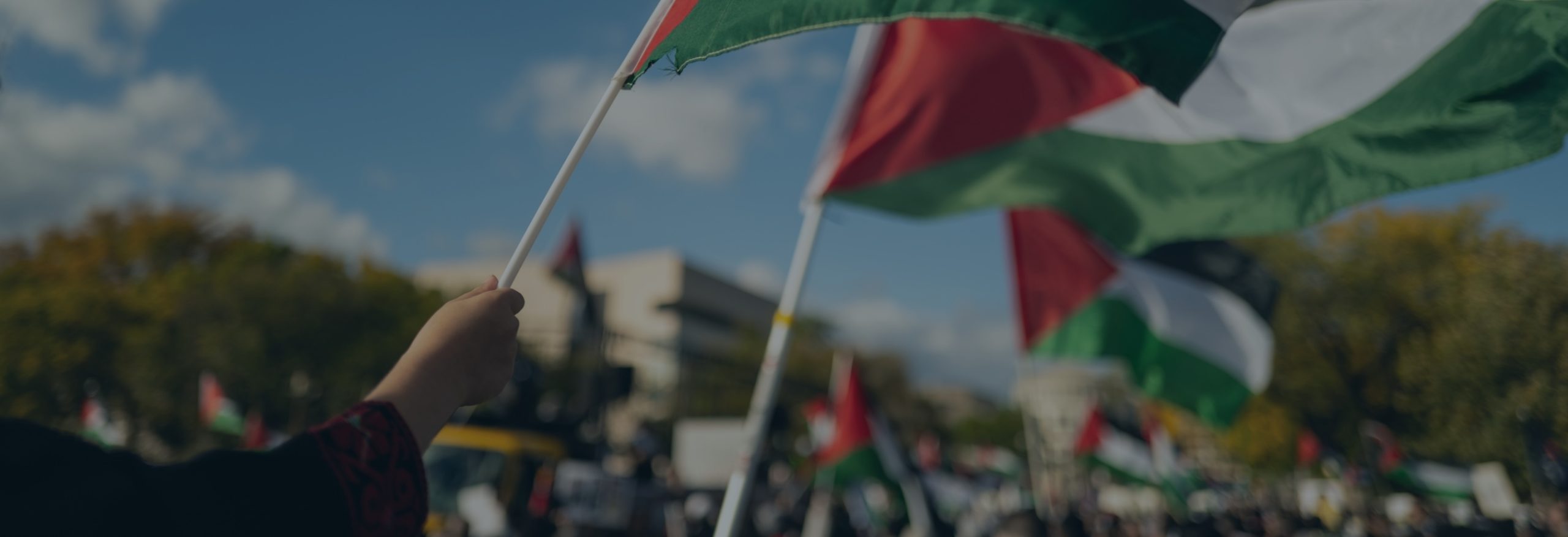
Major Cities Prepare for Potential Disruptions as Protests Loom
Intelligence cut off: 11:00 GMT 4th of October 2024
On 7 October 2023, the Palestinian group Hamas launched an offensive from the Gaza Strip into southern Israel, killing 1200 – mostly civilians – and taking more than 200 hostages. The attack represented the start of the ongoing Israel-Hamas war. As of October, Israeli troops have been carrying out protracted operations within the Gaza Strip to destroy Hamas and free the hostages that remain in Hamas captivity. More than 41,000 Palestinians – a majority being civilians – have died over almost a year of conflict, and much of Gaza’s residential and public infrastructure has been destroyed or severely damaged, leading to a severe humanitarian crisis.
In late September, the conflict in the Middle East entered a new stage. Following a series of decapitation attacks – which resulted in the death of Hezbollah leader Hassan Nasrallah and other key “Axis of Resistance” figures – which were preceded by a (likely) sophisticated Mossad operation involving the detonation of thousands of communication devices used by Hezbollah members, Israeli forces launched a limited ground offensive into southern Lebanon. On 1 October, Iran – a key Hezbollah ally – responded by launching a barrage of approximately 200 ballistic missiles against Israel. Currently, Israel Defence Forces (IDF) units continue operations in Lebanon.
The war has driven a significant increase in international attention towards the broader Israel-Palestine conflict and has been a fundamental motivating factor for numerous cases of civil unrest, as well as political violence and terrorism. With the anniversary of the start of the conflict, and its recent expansion to southern Lebanon, further large-scale unrest is scheduled to take place in dozens of capitals and large urban centres.
Upcoming Global Protests: EMEA, AMER, and APAC Regions
In the past weeks, multiple protests have been announced in the period between 5 and 10 October. This period is both highly visible and highly significant from a cultural and political perspective: it begins on the day following Rosh Hashanah, and will also end on the eve of Yom Kippur, thus occupying the space between the two holiest days of the Jewish religious calendar.
Diverse Movements Fueling Global Protests
It would likely be incorrect to speak of a single cohesive international pro-Palestine movement, or of any specific ideology associated with it. Past protests and initiatives, as well as the ones scheduled to take place over the next weeks, have been planned by a series of diverse actors, including groups espousing ideologies that theoretically do not overlap with the Palestinian cause.
This high level of intersection between different local initiatives likely underscores a high level of transnational communication and planning, also facilitated by social and digital media.
In addition to numerous pro-Palestine protests, there also are a large number of pro-Israel demonstrations planned to coincide with the anniversary of the Hamas attack. More ideologically cohesive, these demonstrations have so far been overall smaller, although their volume and traction has heavily varied depending on local political landscapes.
Civil Unrest Risks Across Europe, Asia-Pacific, and the Americas
Europe, and especially north and west Europe, likely is particularly at risk for civil unrest during the period. Protests have been scheduled to take place in multiple capitals and large cities, including London, Paris, Marseille, Rome, Bologna, Warsaw, Madrid, Amsterdam, Athens, Berlin, Vienna, Malmo and Istanbul.
In the Asia-Pacific region, likewise, protests are expected to take place in cities across Australia, New Zealand, India, Japan, Pakistan, Bangladesh, Thailand, the Philippines and South Korea.
The United States will also highly likely be a hotspot for civil unrest around the anniversary of the start of the conflict. American universities spearheaded the global pro-Palestine movement, and almost certainly popularised certain forms of protests – including campus “encampments” – that were replicated by universities in Europe and Oceania.
Government Responses and Restrictions on Protests
The majority of these initiatives have been developed at the activist group and civil society level. However, the high political relevance of the anniversary has likely driven an uncommon degree of government and party involvement in the promotion (or opposition) to the event.
In particular, there are at least two notable cases of direct government intervention to prevent organised unrest from going ahead. In Australia, the police and government initially banned a solidarity “vigil” planned for 7 October in Sydney. The ban on the event – Prime Minister Anthony Albanese called the planned demonstration “incredibly provocative” – was eventually overturned following an agreement between the organisers and police.
In Italy, the government did not grant permission for a planned gathering on 5 October in Rome, prompting a severe backlash from both the pro-Palestine activists (who have reiterated their intention to carry out the demonstration) and the left-wing opposition.
In addition to these government-imposed bans, other protests scheduled to take place on university campuses have been prohibited by academic administrators.
Civil Unrest to Pose High Secondary Threats
There is a high likelihood that there will be an increase in civil unrest in the 5-10 October period (and possibly beyond 13 October, the anniversary of the beginning of Israeli operations in Gaza). Further developments in the conflict, especially in the Lebanese front, could drive rapid changes in the volume and scope of civil unrest incidents.
Increased Security Risks in European Cities
European cities are likely to be particularly at risk. The choice to hold pro-Palestine protests overlapping with the anniversary of the 7 October Hamas attack in southern Israel will likely be perceived as a provocation and almost certainly result in an increased security risk level at the protest locations.
There is a high likelihood of pro-Israel counterprotest groups seeking to disrupt the pro-Palestine gatherings. Likewise, there is a high likelihood of clashes breaking out between protesters and police, especially in cities where clashes have previously occurred (such as Paris), and in those where the protests have not been approved.
The scope and high visibility of the demonstrations are also likely to result in an increased threat from lone-wolf terrorism, either targeting the protesters or high-visibility targets in protest locations, including government buildings and places of worship. Moreover, there is a realistic possibility of foreign actors seeking to leverage European open media spaces to encourage violence, also through the spread of disinformation, in a way similar to the recent Southport riots in the United Kingdom.
Asia-Pacific Region: Comparatively Peaceful Protests
Conversely, the majority of protests throughout the Asia-Pacific region are likely to be comparatively more peaceful. Travel disruptions are still a realistic possibility in major city centres due to heightened security measures.
Potential for Unannounced Protests and Violence
In addition to scheduled gatherings, there is a high likelihood of impromptu or not publicly announced protests being staged outside of the embassies and consulates of countries providing political and material support to Israel, such as the US, UK and France. These protests will likely have a greater risk of violence, and especially vandalism targeting diplomatic assets and offices.
Protests Outside Israeli Embassies and in Pakistan
Protests are also highly likely outside of Israeli embassies within the region and have previously been observed in Thailand, South Korea and the Philippines. In Pakistan, two of the country’s largest parties, Jamaat-e-Islami (JI) and the Pakistan Tehreek-e-Insaf (PTI) party have announced joint protests on 7 October that will cross the political divide. Protests are likely to develop outside US diplomatic buildings in Islamabad, Lahore, Karachi, and Peshawar.
Government Responses and Legislative Developments
The threat of clashes between government and police forces and protesters is particularly likely in countries where the executive is considered to be actively opposed to the protest movement. Again, the cases of Australia and, especially, Italy, are exemplary. In the latter, the recent government refusal to approve the demonstration planned for Rome is also compounded by broader legislative developments. In particular, the Italian lower chamber recently passed a new security law, which has been strongly criticised by the opposition for reportedly restricting freedom of protest. These two developments will likely drive significant civil unrest on 5 October and in the coming weeks in large Italian cities.
NAVIGATING CIVIL UNREST SAFELY
Practical Strategies for Ensuring Safety During Protests and Riots
Explore our comprehensive Civil Unrest Guide, designed to equip travellers with essential strategies for navigating protests, riots, and civil unrest. Learn practical tips on how to stay informed, avoid high-risk areas, and respond effectively in crisis situations, ensuring safety and peace of mind while travelling.
Subscribe to free weekly intelligence

Alert Plus: IDF Launches Ground Offensive in Southern Lebanon
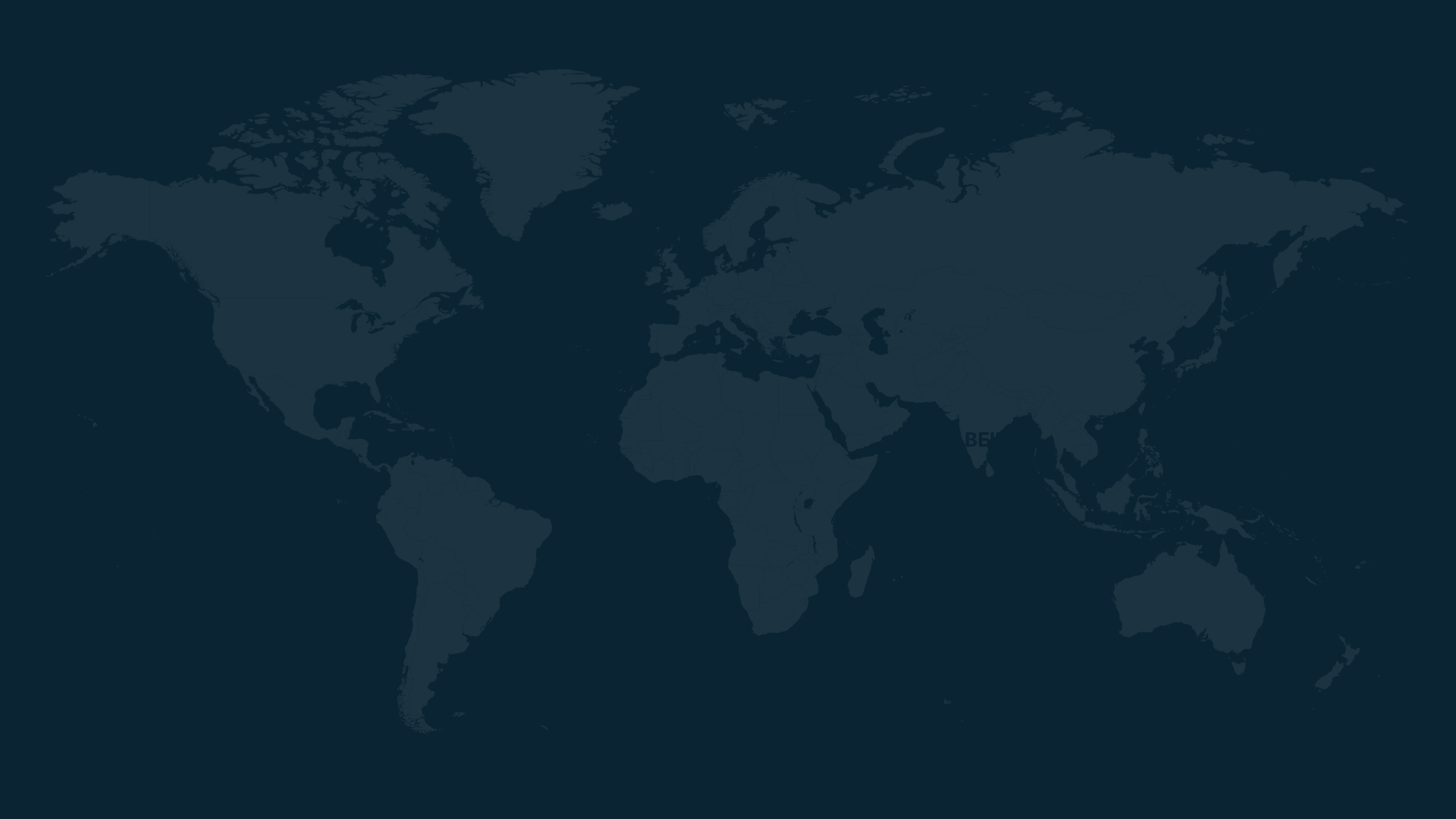
Escalation in the Israel-Lebanon Conflict: Ground Operations and Airstrikes
Intelligence cut off: 12:00 GMT 2nd of October 2024
Shortly after 11:00 pm (local time) on 30 September, the Israel Defense Forces (IDF) launched what they described as a “targeted and delimited ground operation in southern Lebanon”, aimed against “terrorist targets and infrastructures of Hezbollah […] that pose an immediate and real threat to Israeli settlements on the northern border”. The 98th division, which was previously deployed in Gaza and was recently moved to the Israeli-Lebanon border, is spearheading the operations. On the morning of 1 October, IDF officials issued an evacuation order for 25 villages in southern Lebanon. The order includes a call for residents to move north of the Awali River, approximately 50km north of the international border. As of the time of writing, available OSINT shows that IDF operations have been limited, with no attempts at penetrating deep into Lebanese territory.
Israeli Air Force (IAF) strikes on Beirut and other parts of the country have continued, prompting severe transport disruptions and hundreds of casualties since mid-September. IDF units are currently also engaged in operations to clear Hezbollah tunnels near the Israel-Lebanon border. The high volume of strikes has also caused a mass displacement of Lebanese residents, with some government figures assessing that up to a million individuals have been internally displaced.
On the afternoon of 1 October, Iran launched a two-wave ballistic missile attack on targets throughout Israel, with reportedly at least 180 missiles being used. Israeli missile defence forces, as well as IAF and allied American and Jordanian air force units, contributed to the interception of the majority of the Iranian projectiles. Nevertheless, this attack was likely more successful at penetrating Israeli defences that the previous large-scale strike in April. Geolocated footage shows multiple missiles impacting areas near sensitive military targets, including the Mossad Headquarters, although no significant damage has been reported as of 2 October 11:00 (BST). The attacks resulted in only one confirmed casualty, a Palestinian civilian which was killed by debris near Jericho, in the West Bank.
Around the time of the reports of the first wave of missiles, two individuals carried out a gun and knife attack in Jaffa, south Tel Aviv, killing six and wounding at least seven. The perpetrators were killed by responding security forces. No Palestinian or international groups have claimed responsibility for the attack.
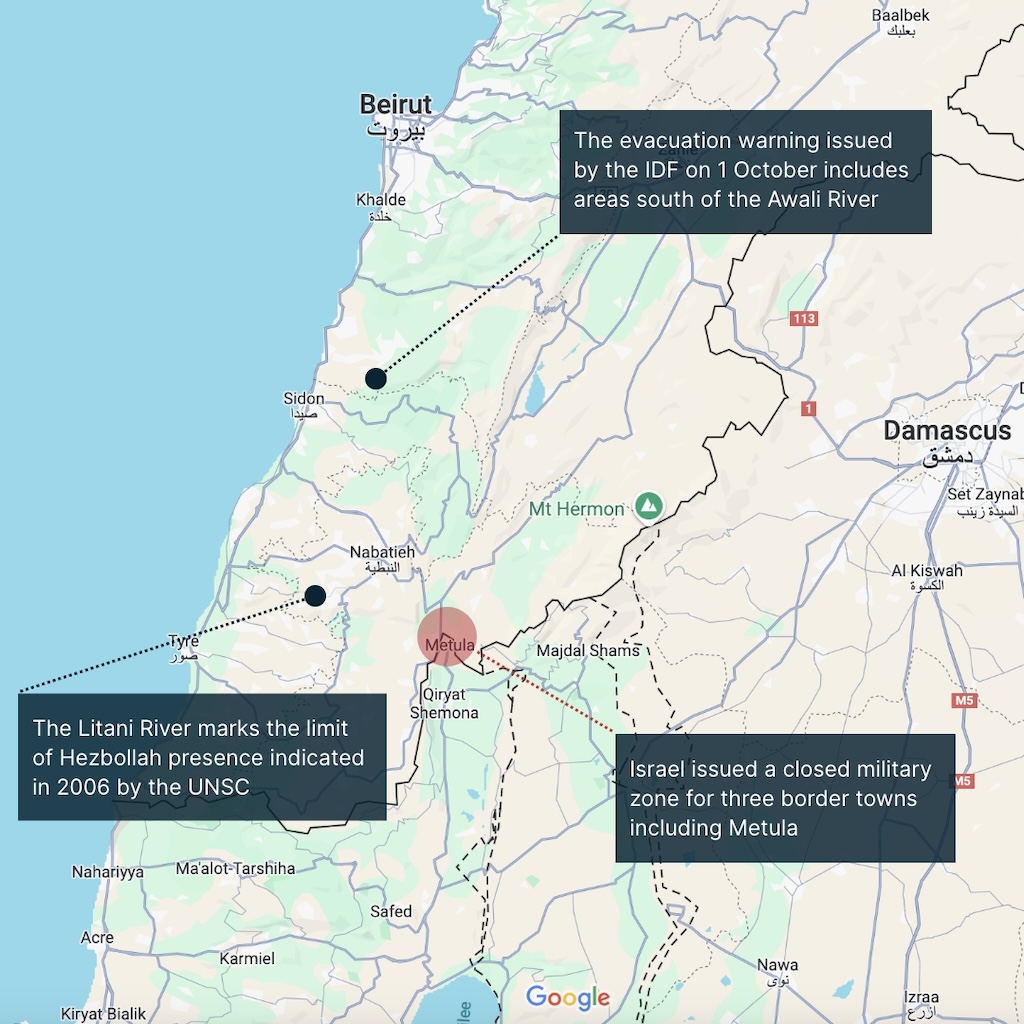
South Lebanon
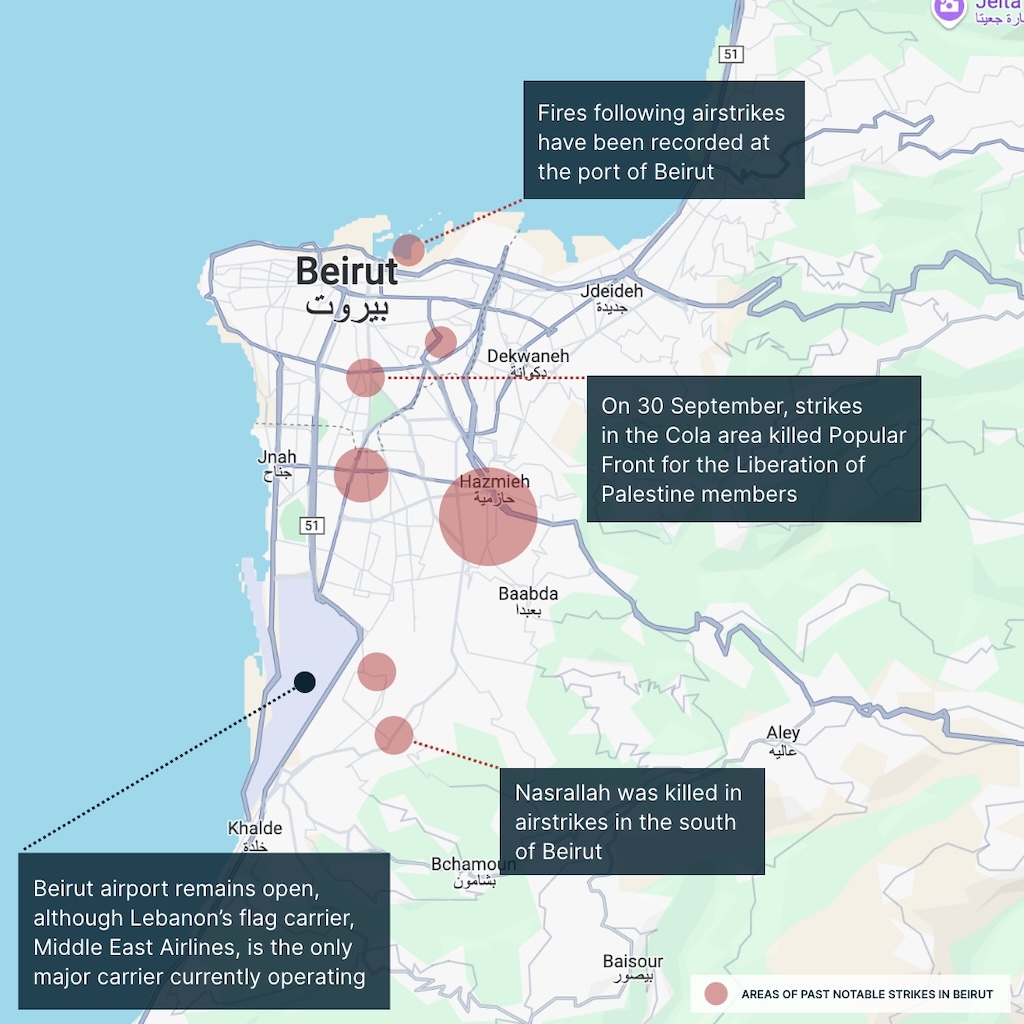
Areas of Past Notable Strikes in Beirut
SOLACE GLOBAL COMMENT
Hezbollah Leadership Targeted as Israel Intensifies Military Operations in Lebanon
The ground operations follows weeks of asymmetric warfare, cross-border exchanges and airstrikes in Lebanon. On 17-18 September, the simultaneous explosion of thousands of pagers and other communication devices, highly likely orchestrated by Mossad, injured or killed at least 3,500 Hezbollah members and was likely shaping activity prior to a wider offensive.
From 23 September, the IAF targeted thousands of Hezbollah facilities, assets and units throughout Lebanon, including in Beirut and in the group’s northern stronghold, the Bekaa Valley. On 27 September, a massive IAF strike in the Dahieh area of south Beirut killed Hezbollah Secretary General Hassan Nasrallah, Ali Karaki, the commander of Hezbollah’s southern front, other members of Hezbollah’s senior leadership, and Iranian Islamic Revolutionary Guard Corps (IRGC) commander Abbas Nilforoshan.
Before the invasion, Israeli officials rejected a 21-day ceasefire deal proposed by the US, France, and other regional powers. The operations in Lebanon have been accompanied by further statements concerning the Netanyahu administration’s commitment to continuing operations until its strategic goals are reached.
The Iranian strike also follows a period of escalation. The large missile and drone barrage in April was carried out in response to highly likely Israeli strikes on Iranian diplomatic assets in Damascus, which resulted in the death of senior IRGC officials. Tehran vowed to retaliate after the wave of decapitation attacks carried out by Israel in the late summer, which killed key “Axis of Resistance” leaders, among them Hamas political bureau chairman Ismail Haniyeh, who was killed in a likely Mossad operation in Tehran. However, newly elected Iranian President Pezeshkian initially stated that Iran would refrain from attacking Israel while ceasefire negotiations continued.
Israeli officials have threatened to retaliate for the Iranian strikes. IDF forces at the Lebanon border have increased since the strikes, with elements of the 36th division also being deployed, likely in support of future operations.
SOLACE GLOBAL ANALYSIS
Implications of IDF Operations for Regional Stability and Security
The IDF’s ground offensive has likely been timed to exploit the current lack of command and control (C2) within Hezbollah which has been achieved through a series of high-profile strikes on the group’s senior leadership.
In September, the Netanyahu administration added the return of Israeli citizens to settlements near the Israel-Lebanon border to their list of stated war aims. The significant degradation of Hamas forces in the Gaza Strip following a year of conflict has also almost certainly allowed Tel Aviv to shift its focus to the north. Israeli officials almost certainly assess that a reduced ground force, combined with a constant threat of airstrikes, will be sufficient to prevent Hamas from reforming units capable of significantly threatening IDF forces in Gaza.
IDF operations are highly likely aimed at destroying Hezbollah assets in the south of Lebanon and preventing the group from targeting north Israel. While Hezbollah maintains some long-range weapons systems, much of the group’s arsenal has a maximum range of ~40km. IDF operations will likely seek to force Hezbollah to retreat north of the Litani River, as per the 2006 UN Security Council Resolution 1701. On 1 October, the IDF announced that it had destroyed at least 700 Hezbollah targets in southern Lebanon as part of a previously undisclosed series of covert operations. The latest operations are highly likely meant to expand these efforts, by employing conventional assets.
It is unlikely that the IDF will commit to a long-term occupation of southern Lebanon, which would entail high political and economic costs as well as a high rate of casualties. The IDF’s main objective is likely to clear Hezbollah forces and weapons from areas immediately adjacent to the border. However, deeper raids and strikes aimed at high-value targets like ammo depots, C2 posts, logistic nodes and launch sites are highly likely.
There is a realistic possibility that part of the Israeli efforts will be aimed at arming and supporting Lebanese militias – particularly Christian ones – that are opposed to Hezbollah. Over the past year, sectarian tensions between Shias, Sunnis, and Maronite Christians have increased in Beirut, and Israeli special operations may seek to leverage these to decrease Hezbollah’s political influence in Lebanon.
The latest attack by Tehran is likely to allow Israeli forces the political justification to increase strikes and ground operations targeting Hezbollah in Lebanon, as well as strikes on other regional Axis of Resistance members. Israeli forces may seek to capitalise on the recent decapitation strikes to significantly degrade Hezbollah’s manpower and, especially, weapons stocks as a prelude to a UN-mediated deal on its northern border. An Israel-Hamas ceasefire deal, remains, as of now, extremely unlikely, especially due to the approaching 7 October anniversary, whose political significance likely makes such a deal unthinkable for the Israeli leadership.
Israeli forces will almost certainly retaliate for Iran’s attack. However, it is highly likely that retaliatory strikes targeting Iranian assets or territory will be limited to avoid further escalation and meant at re-establishing deterrence. There is a realistic possibility that Israeli forces will opt to strike Iranian officials and assets in Iraq or Syria, including IRGC members. Moreover, Israeli strikes could also target military targets, including missile launch sites and air defence stations, in Iranian territory, as well as strategic objectives like oil extraction facilities and refineries.
Finally, there is a realistic possibility of Israeli strikes targeting Iranian nuclear programme facilities. While such a course of action has been advocated by “hawkish” elements of the Israeli government, as well as some allied political figures, such a move would highly likely be opposed by London, Washington, and Brussels, as it poses an obvious threat to the possible resumption of nuclear negotiations, which Pezeshkian has repeatedly called for in his recent speech at the UN General Assembly.
On 1 October, at approximately 10:00 (BST), Israeli officials reported that IDF forces have intensified raids in the West Bank, and especially Hebron, in response to the Jaffa terror attack. While the dynamic of the attack still remains partly unclear, there is a high likelihood that it will result in spontaneous retaliatory violence in the West Bank, including in violence involving Israeli settler groups.
Travel Risk Advice: Lebanon and northern Israel
- Avoid all non-essential travel to Lebanon and northern Israel.
- Familiarise yourself with local bomb shelters or reinforced structures.
- Avoid all sites and facilities likely deemed as legitimate military targets, such as military installations, government buildings and key infrastructure such as bridges and power plants.
- If operating within Israel, ensure that you have downloaded the Red Alert, the Home Front Command and/or Tzofar applications that provide real-time situational awareness regarding rocket, missile and mortar attacks into Israel.
- Closely monitor announcements from local authorities and media sources for any developments that may severely impact the local security environment.
- Ensure that you contact and register with your local embassy or consulate if stuck within Israel or Lebanon.
- Always follow all instructions and orders from security forces.
- Civil unrest and demonstrations are likely within Lebanon. Travellers are advised to avoid all areas of unrest and to not voice opinions. There is a realistic possibility of sectarian tensions within Lebanon.
- Have emergency contact numbers saved on your phone. These should include the local authorities, medical facilities and any consular support. Ensure that mobile phones are charged in case of any losses in electricity.
- Evacuations and internal displacement will lead to widespread travel disruption and congestion on major roads. Ensure vehicles are fuelled, consider alternative routes and ensure that vehicles are loaded with additional fuel, water, food and other critical supplies.
- Ensure you have an emergency kit/grab bag with essentials for up to 72 hours, including food, water, flashlights, medications, phone chargers, power banks and first aid supplies.
- Monitor the Solace Secure platform and trusted local media for relevant updates.
IMMEDIATE RESPONSE FOR LEBANON CRISIS
Evacuation Services for Escalating Tensions in Lebanon
With a highly dynamic and evolving security landscape, businesses operating in the region are likely to be considering the evacuation of their employees and/or securing their assets. Beirut’s airport remains operational, but safe travel options may become limited due to the rapidly changing situation on the ground.
Solace Global can help global organisations facilitate for the safe transportation of their people as Western governments prepare for potential evacuations. We offer emergency evacuation services designed to ensure your people’s safety during a crisis.
Subscribe to free weekly intelligence

Hezbollah’s Communication Device Attacks
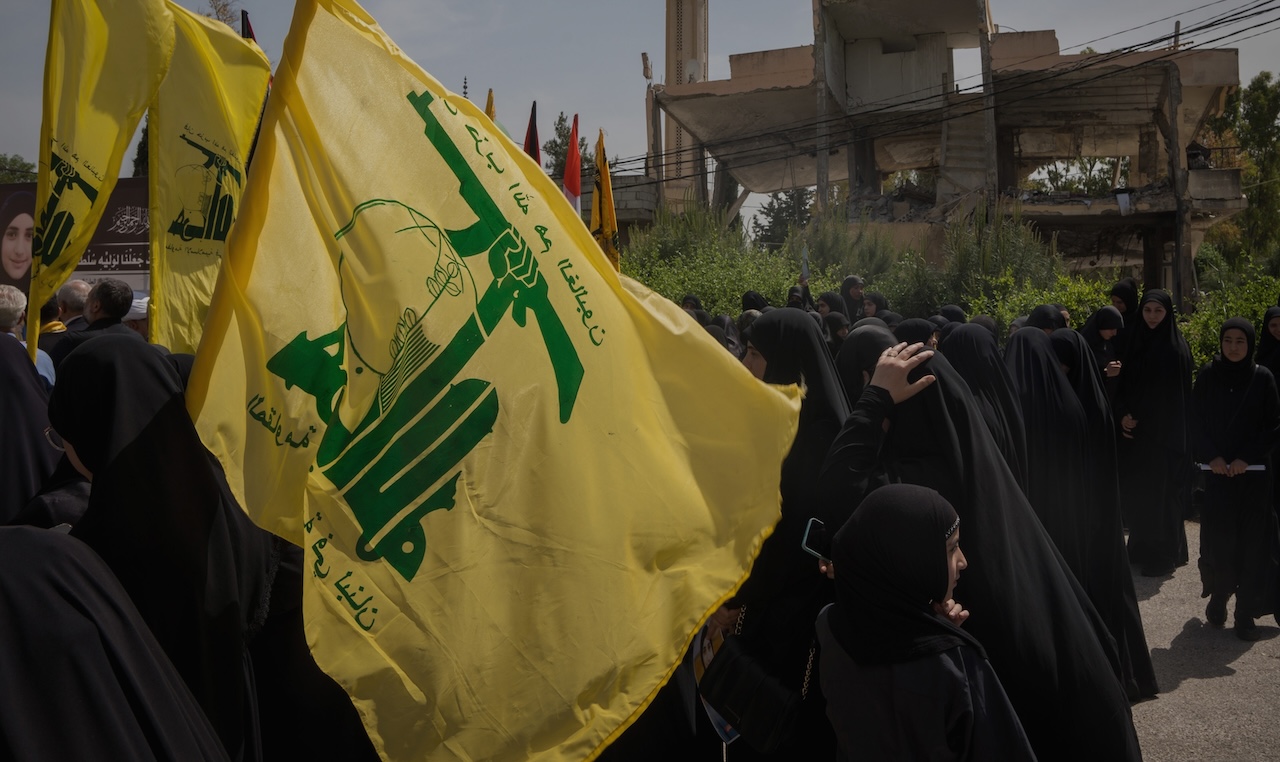
Hezbollah Pager and Walkie-Talkie Explosions Across Lebanon: What Happened?
Intelligence cut off: 11:00 GMT 19th of September 2024
On 17 September, thousands of pagers that were used by Hezbollah members detonated simultaneously across Lebanon. At 15:30 local time, the pagers reportedly beeped for several seconds after receiving a message ostensibly from Hezbollah leadership, before detonating. At least 12 deaths were reported, with approximately 3,000 injuries. Amongst those killed was Muhammad Ali Ammar, the son of Hezbollah MP Ali Ammar, and Iran’s ambassador to Lebanon, Mojtaba Amini, who was wounded.
Then, on 18 September, thousands of two-way walkie-talkie radios used by Hezbollah members detonated. Unconfirmed reports suggest that home solar energy systems and biometric fingerprint scanners may have also exploded. Some of the radios detonated during the funerals for Hezbollah members who had been killed in the pager attack a day prior. 20 deaths were reported, with 450 injuries. While the 17 September pager detonations were more widespread, the 18 September walkie-talkie blasts were more powerful and deadly.
Why Did Hezbollah Use Pagers and Walkie-Talkies Instead of Cell Phones?
Hezbollah members have been using pagers for years, due to operational security concerns regarding Israeli tracking of cell phones. A speech by Hezbollah’s secretary-general Hassan Nasrallah in February encouraged members to discard their cell phones, which led to more widespread adoption of pagers amongst the rank-and-file. As well as being used by Hezbollah members throughout Lebanon, pagers were distributed to members and allies in Iraq, Syria and Iran and the pager detonations injured at least 14 people in Syria, according to the Syrian Observatory for Human Rights.
Who was Behind the Explosions Targeting Hezbollah?
The attacks were highly likely conducted by Mossad, Israel’s national intelligence agency. Historically, responsibility has not been publicly claimed by Israeli officials for Mossad operations conducted abroad, therefore it is highly unlikely that an official claim of responsibility will be made for the attacks.
While there has been speculation that the attacks involved hacking into the devices to cause the batteries to explode, this is almost certainly untrue. While overheated lithium-ion batteries can combust and in rare instances, cause small explosions, the explosions were almost certainly caused by small quantities of military-grade high-explosives.
How Did Mossad Infiltrate Hezbollah’s Supply Chain?
The model of pagers that detonated were mostly Gold Apollo’s AR924 model. Hezbollah had reportedly ordered over 5,000 pagers, before distributing them to members. Gold Apollo, a Taiwanese company, has stated since the attack that these models were manufactured on license by the Budapest-based company BAC Consulting. Gold Apollo additionally stated that they had encountered issues with remittances from BAC, and that payments had come through the Middle East. According to three intelligence officers briefed on the operation who spoke to the New York Times, BAC Consulting was an Israeli front posing as an international pager producer.
The walkie-talkies that detonated, meanwhile, were primarily IC-V82 models from the Japanese company ICOM. ICOM has stated that they ended production of the model 10 years ago. It is highly likely that Mossad similarly infiltrated the supply chain for the walkie-talkies.
What Are the Immediate Consequences for Hezbollah?
The attacks have firstly highly likely caused a significant impact on Hezbollah’s operational capability. As well as the deaths, a substantial number of members are now wounded, with many injuries from the attack including maiming and blinding. It is highly likely that their command structure is significantly disrupted. Internal communications are almost certainly also disrupted.
Secondly, the psychological impact on morale is almost certainly profound. Such a large-scale infiltration into Hezbollah’s supply chain is a major breach of security. Questions will be raised not just among Hezbollah, but also in Iran and Tehran’s other proxy forces of the extent to which their supply chains could be compromised. The use of commercially available products and parts by Iran and its proxies is commonplace. The attacks will almost certainly stoke paranoia regarding the potential danger posed by any electrical device.
Why Was the Timing of the Mossad Operation Significant?
The most likely reason for the specific timing of the attack is that the capability was about to be exposed and possibly nullified. According to “high-level regional intelligence sources” who briefed Al-Monitor, the decision to detonate the pagers was expedited by the discovery of device tampering by two Hezbollah operatives. While one of the operatives was “neutralised”, the pager attack was carried out in anticipation of the other operative alerting authorities, according to these sources.
Furthermore, three US officials told Axios that the pager operation was done now due to potential discovery, with one describing it as a “use it or lose it moment”. It is highly likely that the walkie-talkie detonations, meanwhile, were activated due to concerns that the remaining tampered devices would be discovered following the pager attack.
Was the Pager Operation Part of a Broader Israeli Strategy?
According to a “former Israeli official with knowledge of the operation”, the pager operation was originally intended to be conducted as an immediate prelude to a wider operation. It is a realistic possibility that such an operation could still occur, however, the lack of an Israeli Defence Forces (IDF) operation thus far likely further indicates that the tactical communication devices attacks were conducted early to avoid the capability being compromised.
The pager attack happened just one day after Israeli authorities announced that the Israel Security Agency, Shin Bet, had foiled a Hezbollah plot to assassinate a former senior Israeli security official using a remotely detonatable anti-personnel mine. It is possible, therefore, that retaliation for this plot was also a factor in the attacks.
How is Israel’s Northern Border Related to the Conflict?
On 16 September, the Israeli security cabinet made the safe return of residents to northern Israel an official war objective. Due to the threat of Hezbollah drone, missile and rocket attacks, many Israeli residents have fled northern Israel close to the border with Lebanon. Israel’s defence minister, Yoav Gallant, has stated that the only available method to return residents to northern Israel “is via military action”. On 18 September, following the pager and walkie-talkie detonations, Gallant stated that Israel is “opening a new phase in the war” and that “the centre of gravity is shifting to the north”.
The attacks, therefore, are highly likely part of an Israeli campaign to degrade Hezbollah’s operational capability as Israeli forces reorient to the northern front.
What Could Hezbollah’s Retaliation Look Like?
Hezbollah has vowed to respond to the attacks, issuing a statement saying that Israel will get “just retribution”. Lebanon’s foreign minister, Abdallah Bou-Habib, has also said that “Hezbollah are definitely going to retaliate in a big way”. Hezbollah’s leader, Nasrallah, is set to deliver a speech on 19 September at 17:00 local time, the content of which will likely indicate the extent of Hezbollah’s retaliation. The IDF has issued a statement asserting that “preparation for defensive operations on all fronts” has been reviewed, and that Israeli civilians should continue exercising “alertness”.
Hezbollah maintains an arsenal of some 150,000 rockets and missiles, and are estimated to have a fighting force of around 50,000 fighters. Hezbollah has sophisticated systems such as the Iranian-derived precision-guide Fateh-110 short-range ballistic missile (SRBM) with a range of 300km, and the SCUD B/C/D SRBM variants with a range of 500km, which give Hezbollah the capability to accurately strike targets anywhere in Israel if air defence is penetrated. However, the vast majority of Hezbollah’s arsenal consists of unsophisticated and unguided systems such as “Katyusha” variants which have effective ranges between 4-40km.
On 4 July, Hezbollah launched over 200 rockets and one-way attack uncrewed aerial vehicles (OWA-USVs, or ‘suicide drones’) into northern Israel, in retaliation to the killing of a senior Hezbollah commander. It is likely that the Hezbollah leadership will feel compelled to retaliate with either a similarly large or greater retaliation attack, due to both the sheer extent of the pager attack and humiliation. On the other hand, however, Hezbollah will not want to give Israel’s Netanyahu administration an excuse they can use as a pretext for a major IDF offensive into southern Lebanon.
Could Hezbollah’s Retaliation Expand Into a Regional Conflict?
It is most likely that Hezbollah’s retaliation strikes will involve strikes, primarily against military installations in northern Israel, within range (~40km) of most of their weapon systems. There is a realistic possibility that Israeli settlements within range, as well as Haifa which is 30-35km from the border, will also be targeted.
An additional risk is that Hezbollah’s retaliation could be folded into a wider Iran-led operation as part of Iran’s Axis of Resistance. Iranian officials have repeatedly vowed retaliation for the 31 July assassination of Hamas’ political leader Ismail Haniyeh in Tehran, Iran. This retaliation would most likely involve a layered coordinated attack against Israel from Iran, its proxy forces in Iraq and Syria, Hezbollah in Lebanon and the Yemeni-Houthis. Most recently, on 16 September, a senior Iranian military commander told Chinese state media that Iranian retaliation is “certain”, but that Tehran will “choose the right moment.”
Security Services across the Middle East
If you’re navigating through high-risk regions and require expert journey management services, Solace Global is ready to assist. Our specialised team delivers tailored solutions to enhance your safety and security, ensuring you can operate with confidence in challenging environments. Reach out to us today to discover how we can provide the support you need for a secure and seamless journey.
Subscribe to free weekly intelligence

Hamas Leader Assassinated: Iran’s Response
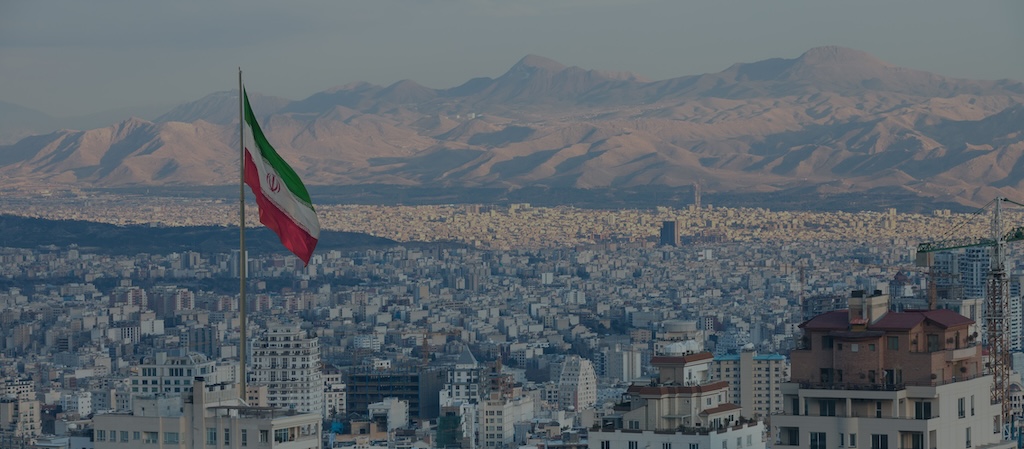
What does the Assassination Mean for the Stability of the Iranian Regime?
Intelligence cut off: 16:00 GMT 31th of July 2024
In the early hours of 31 July, the head of the Hamas political bureau, Ismail Haniyeh, was killed in what has been described as “a treacherous Zionist raid on his residence in Tehran”, according to the Palestinian militant group.
Iran’s new President Masoud Pezeshkian, has sworn to make Israel regret what he declared was a cowardly action. Iran’s Supreme Leader, Ayatollah Khamenei has stated that avenging Haniyeh’s death is Tehran’s duty, and Iran’s formidable Islamic Revolutionary Guard Corps (IRGC) has stated that Israel will face “a harsh and painful response” from Iran and its allies – almost certainly referring to Tehran’s wider network of proxy forces. These include the Houthi Movement in Yemen, Hamas in the Gaza Strip, the Popular Mobilisation Forces (PMFs) throughout Iraq and Syria, and Hezbollah – Iran’s most highly trained, organised and well-equipped proxy force.
Weaknesses in Iran’s Defences and Strategic Considerations for Iran
Whilst Israel is widely expected to be behind the assassination it has refrained from commenting on the event and has stated that the Israeli military is conducting a situational assessment. An attack this deep into Iran and on such a sensitive target will be seen as a major embarrassment for Iran. Although the term “raid” typically implies a tactical operation with a physical presence within Iran, this is highly unlikely and the attack most likely involved some form of missile. Israel’s ability to strike so deep into Iran suggests major deficiencies in Iran’s air surveillance and air defence network.
Reports also indicate that Haniyeh had only arrived in Iran on 30 July. Israel’s ability to locate, track and target Haniyeh within such condensed timeframes indicates a high level of Israeli intelligence penetration into Iran and significant weaknesses in Iranian counterintelligence. Israel’s attack on the Hamas leader has demonstrated that it can attack anywhere within Iran – a threat the regime will be cognisant of.
Iran is also closer than ever to achieving a nuclear deterrent, one of the regime’s primary objectives. A major escalation with Israel will almost certainly see this project targeted, likely sending it back years. Iran’s new president is seeking a path towards reconciliation with the West after years of sanctions that have crippled the Iranian economy. A major escalation will jeopardise these attempts and invariably lead to Iran’s greater isolation, the imposition of more sanctions and increased internal pressure on the regime.
While Iran has promised severe consequences and will likely have to show some level of force, Iran will need to factor in these variables before it decides to escalate.
How will the assassination impact Ceasefire Negotiations between Israel and Hamas?
The immediate effect of Haniyeh’s assassination may be the collapse of current ceasefire negotiations between Israel and Hamas. Perceived as a moderating influence in Hamas, Haniyeh’s relative pragmatism was considered vital to diplomatic efforts. While he served as Hamas’ political leader, his de facto power over Hamas in Gaza was limited, with the more hardline Yahya Sinwar leading in Gaza. Sinwar, a battle-hardened militant, contrasts with Haniyeh, who acted more like a conventional politician.
Although Haniyeh’s leadership was largely symbolic, he was pivotal in fostering and maintaining diplomatic channels with key regional actors, essentially serving as the face of Hamas’ international diplomacy. Based in Qatar, Haniyeh was a key influence in ongoing ceasefire negotiations between Hamas and Israel, brokered by Qatar, Egypt, and the US.
While not directly engaged in day-to-day negotiations, his death is likely to jeopardise ceasefire talks. The Qatari prime minister has questioned the viability of the talks following Haniyeh’s killing, and Egypt’s foreign minister called the attack a “dangerous escalation” that undermines negotiations. It is a realistic possibility that Hamas may pull out of the negotiations entirely as a result of his death.
Furthermore, it is likely that Haniyeh’s death will empower hardliners within the political wing of Hamas, and Haniyeh’s replacement as Hamas’ political leader is likely to be less willing to engage in peace talks – a development that would likely prolong the war in Gaza and sustain associated civil unrest throughout the globe.
Iran’s Potential Responses to the assassination of Haniyeh
Haniyeh’s funeral will be held in Tehran on 1 August at 8 am local time before his body is transferred to the Qatari capital of Doha for burial on 2 August. Any coordinated response by Iran will likely occur after Haniyeh’s funeral.
Iran’s attack in April consisted of an assessed 350 rockets, missiles and drones launched by both Iran and its proxy forces throughout the Middle East. This attack was in response to the killing of senior members of the IRGC’s Quds Force within Syria. An attack within Iran itself during a presidential inauguration will be interpreted as an attack on the country’s sovereignty and honour, a situation that will likely warrant a stronger response from Tehran.
The assassination of Haniyeh also follows the recent decapitation strike on a senior Hezbollah commander, with indications that Hezbollah too will respond with force. The effect of these double assassinations will be to galvanise The Iranian-led resistance against Israel.
The most obvious form of retaliation by Iran and its proxies will be to launch a similar attack to the one observed in April. This would consist of Iran and all of its proxy forces firing projectiles near-simultaneously at Israel and from as many axes as possible to overwhelm Israel’s advanced air defence network. Such an attack would likely prioritise the targeting of Israeli military installations rather than population centres. Tehran will likely attempt to conduct an attack that will fall below what it calculates is Israel’s threshold for a major escalation, while still large enough to demonstrate strength, intent and capability.
However, debris from projectiles intercepted by Israeli air defence systems will pose a major risk to anyone in Israel and even in countries on the approach, such as Jordan, as evidenced by the April attack. In addition, the recent Hezbollah-linked rocket attack in the Golan Heights which killed 12 children, demonstrated the inaccuracy of unguided rocket systems which make up the bulk of Hezbollah’s arsenal.
To avoid escalation, Iran may seek to rely solely on its proxy forces, especially Hezbollah as it knows it can hurt Israel from Lebanon. This approach provides Tehran with multiple advantages. Firstly, Iran can retain its own strategic military capabilities such as its ballistic missiles. Most importantly, by leveraging its proxy forces, Iran can maintain some degree of plausible deniability, thus reducing the chances of a direct conflict. Hezbollah’s current arsenal of some 150,000 rockets and missiles, its experience in guerilla warfare and its use of conventional and non-conventional tactics puts Hezbollah in an advantageous position to inflict losses on Israel at the behest of Iran.
Another option available to Iran will be to target Israeli interests on the global stage. Iran has a legacy of attacking Israelis or Jews way beyond the borders of Israel and there have been examples of this since 7 October. In November 2023, authorities in Brazil uncovered an alleged plot linked to Hezbollah to attack Jews in the country. In 1994, 85 people were killed in Buenos Aires, Argentina when a bomb detonated at the Amia Jewish cultural centre – a terrorist act that Argentina claimed was carried out by Iran. These attacks indicate the scope of Iran’s reach and its willingness to conduct offset action on the global stage- an option that may be attractive as it provides a high level of plausible deniability and is unlikely to trigger a regional escalation.
READ MORE
Hezbollah Strike in Lebanon: Israel’s Possible Retaliation
On July 27, a rocket hit a football pitch in Majdal Shams, a Druze town in the Israeli-occupied Golan Heights, killing 12 children. Israeli authorities have blamed Hezbollah for the attack. Explore the possible responses Israel might take following this Hezbollah rocket attack, including military actions and potential retaliation scenarios.
Subscribe to free weekly intelligence

Hezbollah Strike in Lebanon: Israel’s Possible Retaliation
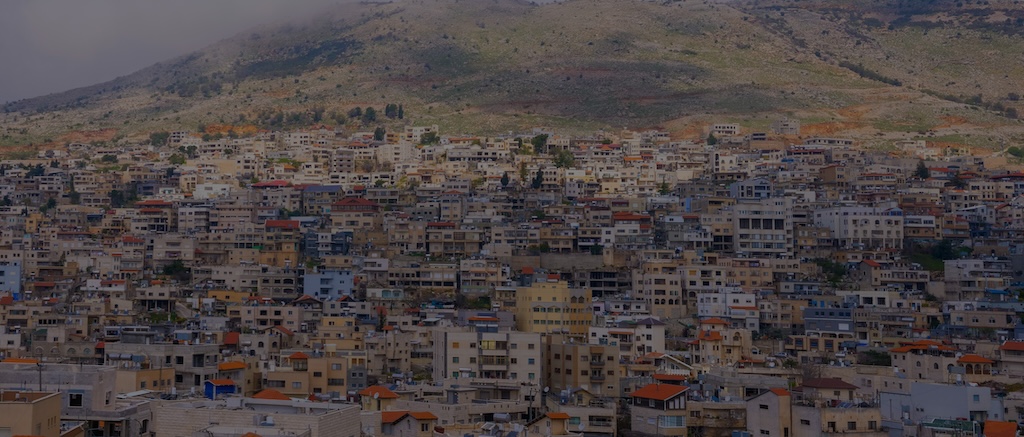
How Israel Might Respond to Hezbollah Rocket Strike in Lebanon
Intelligence cut off: 16:00 GMT 30th of July 2024
On 27 July, a rocket struck a football pitch in the Druze town of Majdal Shams in the Israeli-occupied Golan Heights, Lebanon. The attack killed 12 children. Hezbollah was blamed for the rocket strike by Israeli authorities.
Since the 7 October Hamas-led raid into Israel, tensions have been high between Israel and Hezbollah. Hezbollah, an Iran-backed Shia militia and political party in Lebanon, are heavily armed with an estimated 50,000 fighters and a rocket and missile stockpile estimated at 150,000.
Will Hezbollah open a northern front against Israel?
While there was initial speculation that Hezbollah would open up a northern front against Israel, Hezbollah’s leader Hassan Nasrallah has been distinctly cautious to avoid major escalation. Nasrallah likely determines that the risks of a major conflict with Israel are too great, and would jeopardise Hezbollah’s path to political legitimacy.
Following an IDF operation that killed a prominent Hezbollah commander on 11 June however, Hezbollah launched over 200 rockets into northern Israel on 12 June. Tensions rose dramatically, with Israeli Foreign Minister Israel Katz subsequently threatening all-out war and the IDF confirming on 18 June that operational plans for an offensive into Lebanon had been approved. In response, Nasrallah threatened war with “no rules” and “no ceilings”, even threatening to strike targets in Cyprus, however, this was largely viewed as a propaganda move intended to project strength and rally support, rather than as a feasible military strategy.
How has the Druze community been affected?
The 27 July rocket strike caused the highest civilian death toll in Israeli-held territory since the 7 October raid. The victims were members of the Druze community, an Arab minority group that adheres to an Abrahamic faith system separate from Islam, Christianity or Judaism. An estimated 150,000 Druze live in Israeli-held territory, primarily in the north, though many Druze refuse Israeli citizenship and identify as Syrian. Israel has occupied the Golan Heights since the Third Arab-Israeli War with Syria in 1967. The funeral held on 28 July was distinctly apolitical, and Druze leaders have called for de-escalation.
Despite Hezbollah’s denials, the rocket attack was likely conducted by the Lebanese militant group. On 27 July, an IDF operation killed four Hezbollah fighters, and Hezbollah subsequently claimed to have launched two rocket strikes in retaliation, with one using a Falaq-1 rocket targeting Maale Golani which is approximately two kilometres away from Majdal Shams. The IDF has since released images of Falaq-1 debris found in Majdal Shams and claims that the rocket was launched from southern Lebanon.
Was Majdal Shams the intended target?
It is highly unlikely that the Majdal Shams football pitch was the intended target. Hezbollah have consistently attempted to avoid major escalation by responding to Israeli operations with what they calculate to be sub-threshold attacks, likely intended to deter further IDF operations while not giving Tel Aviv the pretext for a full-scale operation into Lebanon. However, unguided surface-to-surface rocket systems such as the Falaq-1 are unsophisticated and prone to inaccuracy.
In response, Israel has promised a “harsh” but contained response. Senior Israeli defence and diplomatic sources have indicated that Tel Aviv wants to avoid a full-scale war which could provoke a wider regional conflict. Similar sentiments have been briefed to the media by Hezbollah officials.
What actions will Israel take next?
On 28 July, the Israeli Security Cabinet authorised Netanyahu and the Israeli Defence Minister to decide the “manner and timing” of military operations in retaliation to the 27 July attack. While the IDF conducted a series of strikes in eastern and southern Lebanon on 28 July, it is unlikely that this operation constitutes the extent of Israel’s response and it is likely that a more intensive military operation is forthcoming. Solace Global assesses the three following scenarios to be the most likely possible outcomes:
SCENARIO 1: Increased IDF strikes in Lebanon and Syria
The most likely course of action by the Israel Defence Forces (IDF) will be to conduct air and drone strikes against strategic high-value targets (HVTs) in Lebanon and Syria. The IDF has already responded by conducting limited strikes on key Hezbollah figures within southern Lebanon and cross-border shelling on Hezbollah frontline positions.
However, previous IDF responses to major Hezbollah attacks have not been confined to southern Lebanon and have included strikes within Hezbollah’s strongholds in the suburbs of south Beirut and strikes on strategic targets within the north of Lebanon. Targets within Lebanon will likely include Hezbollah command and control centres (C2), weapons caches, logistic nodes and senior leadership to degrade and demoralise Hezbollah’s forces.
Targets within Syria will likely extend to sites linked to Iran’s Islamic Revolutionary Guards Corps (IRGC). IDF targets in Syria will likely prioritise weapons depots and other targets associated with the facilitation of lethal aid into Lebanon. Early indications are that Hezbollah has begun to reposition many of its strategic weapon systems like precision-guided missiles to complicate the IDF’s targeting process in anticipation of IDF strikes.
SCENARIO 2: IDF Limited Ground Offensive
The IDF’s second most probable course of action is to execute a limited offensive into southern Lebanon up to or just beyond the Litani River. This operation would aim to clear Hezbollah positions and push their rocket sites further north, thereby creating a buffer zone and enhancing security in northern Israel by reducing the range from which Hezbollah rockets can be launched. However, current indications are that the IDF’s Northern Command has yet to be significantly reinforced which would be a key indicator and warning of a major offensive.
Most importantly, current ceasefire negotiations with Hamas have not yet reached an agreement. Failure to reach a ceasefire with Hamas will force the IDF to maintain significant resources in Gaza and any redeployment of forces north will almost certainly be exploited by Hamas. Western diplomats have urged Israel to de-escalate and Israeli officials have suggested that their goal is to “hurt” Hezbollah without dragging the Middle East into a regional war. Fears of a major diplomatic backlash and further international isolation may deter the Netanyahu administration from pursuing a large-scale offensive into southern Lebanon.
Israel will also be cognisant of the military challenges involved with an offensive into southern Lebanon. The 2006 conflict revealed significant challenges, including higher-than-expected casualties and an underestimation of Hezbollah’s strength and tactics. Hezbollah has only improved its military capabilities since then and entrenched its positions. A full-scale conflict with Hezbollah would also result in a major escalation of Hezbollah strikes into Israel, with some of the militant group’s more capable weapon systems able to target the entirety of Israel.
It would also be a trigger for an escalation in attacks from Iran’s Axis of Resistance throughout the Middle East, including the Houthis in Yemen and the Popular Mobilisation Forces (PMF) throughout Iraq and Syria. This would invariably include increased rocket, missile and drone attacks on Israel from multiple axes. While Israel was able to withstand the Iranian-led 13 April attack, Israel’s defence was hugely guaranteed with allied assistance. The attack also revealed certain limitations in Israel’s air defence network, issues that have been further highlighted by recent Houthi drone strikes. An Israeli-provoked major escalation may not be met with the same level of external assistance, especially from Arab nations, and will likely be larger than the previous attack on Israel.
There is a high likelihood that a major increase in Iranian proxy missile, rocket and drone attacks will lead to numerous casualties within Israel. Such a development will increase internal pressure on the Netanyahu administration which is already having to deal with episodic civil unrest- potential pressure that will likely make the option of targeted strikes more appealing.
SCENARIO 3: Hezbollah seek to de-escalate
A third and least likely development is that Hezbollah takes the initiative to de-escalate by withdrawing its military capabilities north of the Litani River, which runs approximately 30 kilometres north of the Israel-Lebanon border. This move would be in accordance with the United Nation’s Security Council Resolution 1701 which forbids the Shia paramilitary force from maintaining a military presence south of the Litani.
Hezbollah’s senior leadership has repeatedly stated that it does not want a major war and is likely only conducting limited attacks into northern Israel to project strength and undermine Israel. Hezbollah’s strategy in recent years has been characterised by attempts to remodel itself as more of a legitimate political force. Though withdrawing military capabilities may be interpreted as a sign of weakness, it would provide Hezbollah with the opportunity to maintain most of its military capabilities and Hezbollah would still be in a position to exercise considerable political influence within southern Lebanon.
This influence could be jeopardised if it engages in a full-scale conflict with Israel that would degrade both its military and political capabilities. According to Lebanon’s Foreign Minister, Abdallah Bouhabib, Hezbollah is ready to commit to this course of action, although these sentiments have yet to be echoed by Hezbollah itself. This move may also secretly be endorsed by Iran. Tehran has spent decades facilitating lethal aid to Hezbollah, helping it become Iran’s primary proxy force which serves as a strategic deterrent to Israel. It is estimated that Hezbollah’s arsenal now amounts to some 150,000 rockets and missiles. This capability poses a significant threat to Israel, and if Hezbollah’s arsenal were launched near-simultaneously and coordinated with other Iranian proxy forces, it would likely overwhelm Israel’s air defences and lead to substantial casualties. Iran is unlikely to relinquish this strategic deterrent until it can ensure its own security, which it anticipates will be achieved through the development of a nuclear weapon.
However, if Iran assesses that Israel’s most probable course of action will only involve targeted strikes rather than a full-scale military engagement, it may reconsider endorsing this strategy. This is because targeted IDF strikes against Hezbollah would limit the immediate threat to Iran’s strategic deterrent, reducing the urgency to de-escalate.
Risk to Travel to Lebanon
Although it is unlikely that a full-scale all-out war will break out between Hezbollah and Israel, tensions are at their highest since the 7 October attack and some form of expanded military action by the IDF in Lebanon is almost certain.
Many countries have issued or reiterated travel advisories to their citizens to avoid all travel to Lebanon and to evacuate immediately if they are already present in the country. These countries include the US, UK, France, Netherlands, Germany, Ireland, Norway, Sweden, Belgium, Denmark and Australia.
Due to the escalation in tensions, flight disruptions are ongoing at Beirut Rafic Hariri International Airport (BEY). Several airlines, including Lufthansa, Turkish Airlines, Aegian Airlines, FlyDubai and Air France have cancelled flights scheduled to depart from BEY.
While most flights are still operating as of 30 July, it is likely that more significant flight disruptions would follow any significant IDF operation, threatening to leave travellers in Lebanon stranded. Even more limited military interventions that do not result in a No Fly Zone being enforced threaten to cause mass flight cancellations, due to the high costs of war risk insurance for airlines.
READ MORE
Hamas Leader Assassinated: Iran’s Response
In the early hours of 31 July, the head of the Hamas political bureau, Ismail Haniyeh, was killed in what has been described as “a treacherous Zionist raid on his residence in Tehran”, according to the Palestinian militant group. Iran vows retaliation. Discover the latest updates and potential impacts.
Subscribe to free weekly intelligence

Possible Unrest in Catalonia Amidst Amnesty Controversy
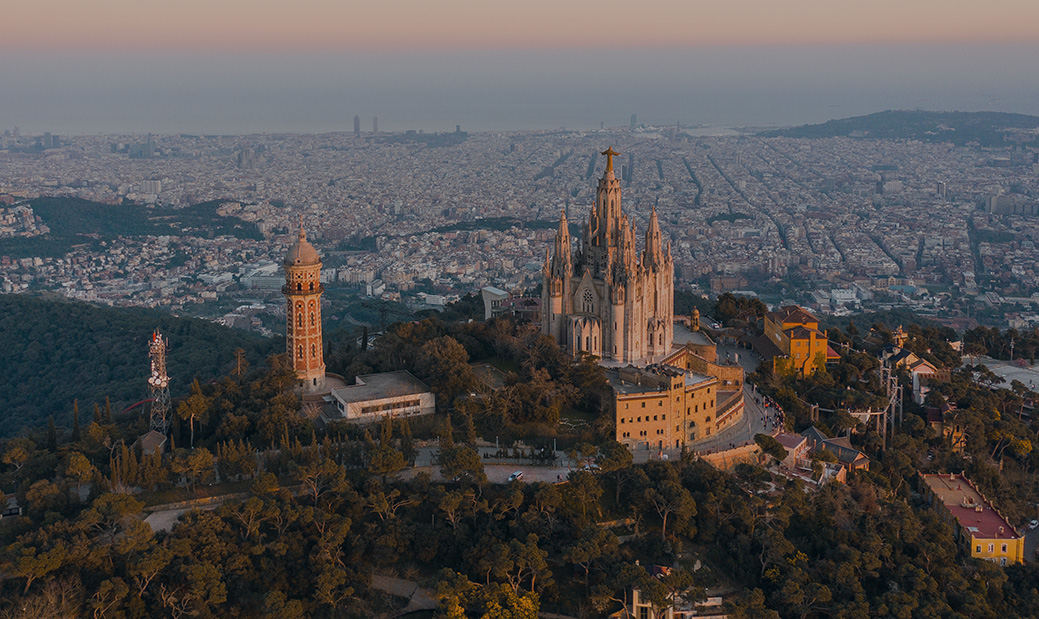
Political Tensions in Catalonia: Amnesty Decisions Spark Criticism
Intelligence cut off: 13:00 GMT 2nd of July 2024
On July 2nd, the Barcelona Provincial Court granted amnesty to 46 national police officers who faced charges stemming from their role in quelling protests during the October 1st, 2017 Catalonian independence referendum. This decision contrasts sharply with the Supreme Court’s ruling the day before, July 1st, which denied amnesty to former Catalan President Carles Puigdemont and several other independence leaders. The Supreme Court justified its decision by arguing that the crimes these leaders are accused of, primarily embezzlement of public and European funds to support the independence movement, are not covered under the amnesty law.
Legislative Context and Controversy
Both cases fall under the recently approved and controversial amnesty law, passed by the Spanish Congress in late May and sponsored by Socialist Party leader and Prime Minister Pedro Sanchez. This law potentially grants amnesty to around 500 individuals involved in the 2017 protests, with exceptions for extreme cases. However, the Barcelona court’s decision to grant amnesty to police officers accused of severe actions like torture or inhuman treatment is seen as lenient and has sparked criticism.
Public Reaction and Potential Unrest
The disparities between amnesty granted to police officers and denied to Catalan leaders are likely to provoke public unrest in Catalonia. The Supreme Court’s decision is viewed by many as politically motivated, especially given past protests following the sentencing of nine independence leaders in 2019, which resulted in widespread disruptions and clashes in major Catalan cities.
Following these developments, there are concerns about renewed civil unrest in Catalonia. Travellers should stay updated with local media for any announcements of protests or demonstrations in the region and exercise caution accordingly.
SUBSCRIBE NOW
Join Our Global Intelligence Summary Mailing List
Don’t get caught off guard by civil unrest. Sign up to receive our weekly Global Intelligence Summary and quarterly Election Guide, highlighting key geopolitical events and upcoming elections that could spark unrest.
Speak to our team about your journey management needs
Alert Plus: Violence Erupts in Nairobi, Kenya
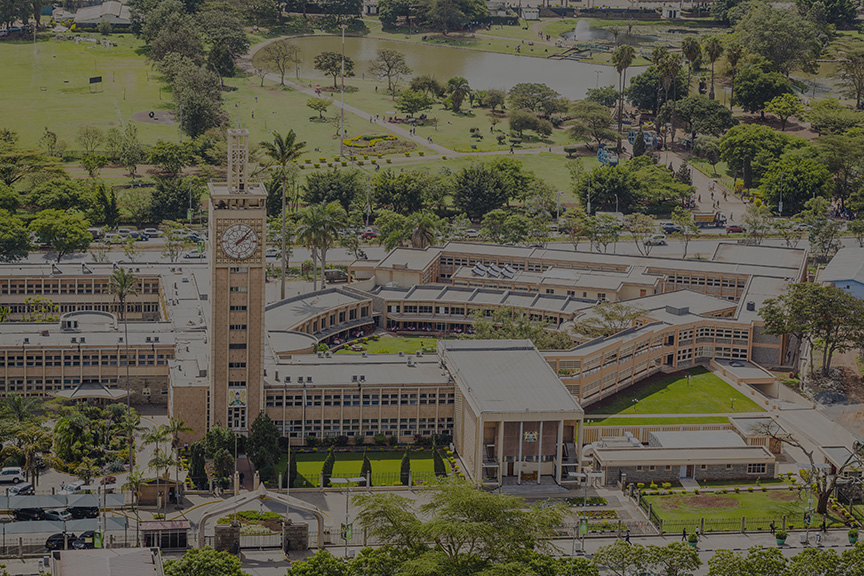
Violence Erupts in Nairobi. Parliament and Government Buildings Targeted
Intelligence cut off: 16:00 GMT 25th of June 2024
On June 25th, Nairobi was engulfed in violence as protesters stormed the Parliament of Kenya, setting the building ablaze. The city, along with urban centres like Mombasa, Nyeri, and Eldoret, became scenes of serious clashes between demonstrators and security forces. Central transportation in Nairobi was brought to a standstill by makeshift barricades and burning tires, exacerbating the tense atmosphere.
Kenya’s Protests: Casualties and Targets
As of 16:15 GMT, official reports confirm at least five fatalities, with 13 serious injuries and 11 minor injuries recorded. However, these figures are believed to understate the true extent of casualties, with unverified accounts suggesting a rapid rise in injuries and fatalities amidst the ongoing unrest.
The protests have primarily targeted government and police facilities. In addition to the Parliament building, protesters set ablaze the Office of the Governor in Nairobi and stormed several police stations. Similar incidents occurred in Eldoret, where the county court faced destruction. There’s also been looting reported at MPs’ clubs and supermarkets in Nairobi and Nyeri, indicative of broader public discontent.
What Triggered Kenya’s Protests: Tax Bill or Government Policies?
The protests were triggered by a controversial tax bill championed by President William Ruto’s government. This legislation increases taxes on essential items such as bread and motor vehicles, part of broader fiscal measures aimed at addressing Kenya’s substantial $80 billion debt and promoting the country as a stable, modern African nation. However, the tax hikes have exacerbated economic hardship for many in a nation where millions live below the international poverty line, igniting widespread anger and unrest.
Kenya’s Government’s Response to the Protests?
What began as peaceful demonstrations on June 18th quickly escalated following heavy-handed police tactics, including the early use of tear gas and mass detentions. By early afternoon, over 200 protesters had been apprehended, marking a critical turning point as crowds gathered outside Nairobi’s central police station demanding the release of detainees.
The government’s response has included shutting down local internet services and using live ammunition against protesters, indicating a hardened stance that could prolong the unrest. The resulting casualties are expected to strain Kenya’s already stretched healthcare infrastructure, potentially necessitating increased support from international NGOs and humanitarian organisations.
How might the unrest impact Kenya’s economy and security?
Beyond immediate humanitarian concerns, the unrest poses significant implications for Kenya’s economy and security. The disruption of infrastructure and government functions in Nairobi and other affected areas could have direct economic repercussions, affecting businesses and travel across the country. Moreover, the government’s aggressive crowd control tactics and apparent failures to safeguard public assets raise concerns about further escalation and the potential need for military intervention, which could complicate the operating environment for foreign humanitarian organisations.
As the situation unfolds, the damage to infrastructure and ongoing disruptions to daily life underscore the precariousness of Kenya’s current state, with implications that extend far beyond its borders.
Travel Risk Advice: Kenya
- Avoid all non-essential travel to Kenya, particularly Nairobi and Mombasa.
- Avoid the central business district in Nairobi, particularly Kenyatta Avenue, Haile Selassie Avenue, City Hall Way and any other wide roads conducive to the staging of protests, as well as all major government buildings such as the Kenyan Parliament or the Governor’s Office.
- Closely monitor announcements from local authorities and media sources for any developments that may severely impact the local security environment.
- Avoid all areas of unrest due to incidental risks to bystanders. If caught in the unrest, travellers should move with the crowd until they find the nearest opportunity to escape. If in a vehicle, look to turn down the nearest road. If driving away is not an option, lock the vehicle and escape on foot.
- Always follow all instructions and orders from security forces. Where possible, avoid areas of active unrest and remain in a secure accommodation.
- Prolonged civil unrest can disrupt travel, especially if protesters begin targeting airports. Travellers should have contingency measures in place, including evacuation plans and reliable access to food, water and medication.
- Have emergency contact numbers saved on your phone. These should include the local authorities, medical facilities and any consular support. Ensure that mobile phones are charged in case of any losses in electricity.
- If caught in the vicinity of a security incident, seek shelter immediately and leave the area if safe to do so. Continue to adhere to all instructions issued by authorities and obey any security cordons in place.
- The overall security situation in Kenya, including Nairobi, is likely to remain severe in the coming days.
- Monitor the Solace Secure platform and trusted local media for relevant updates.
SUBSCRIBE NOW
Join Our Intelligence Briefing Mailing List
Don’t get caught off guard by civil unrest. Sign up to receive our weekly Global Intelligence Summary and quarterly Election Guide, highlighting key geopolitical events and upcoming elections that could spark unrest.
Enhancing resilience and business continuity planning
Solace Global Risk is a leading provider of comprehensive risk management solutions, serving clients globally with a commitment to excellence. Our team of seasoned experts, empowers organisations to navigate complex risk landscapes with confidence and resilience.
Journey Risk Management
Global Security and Threat Intelligence
Risk Management Software
Your duty of care doesn’t end the moment your people set foot in their destination – and neither does ours.
From transfers to ongoing security and emergency evacuations, our travel risk services always have you covered.
Arm yourself with the knowledge to avoid a potential threat from turning into a crisis. Intelligence advisories give you tailored reports to anticipate possible disruptions, mitigate risk and help you make well-informed decisions, faster.
Give your people peace of mind when they travel for work, so they remain focused on the job at hand. We mitigate risks, manage incidents if they occur, and support your people with security advice or help in a crisis.
Speak to our team about your journey management needs
Nakba Day 2024
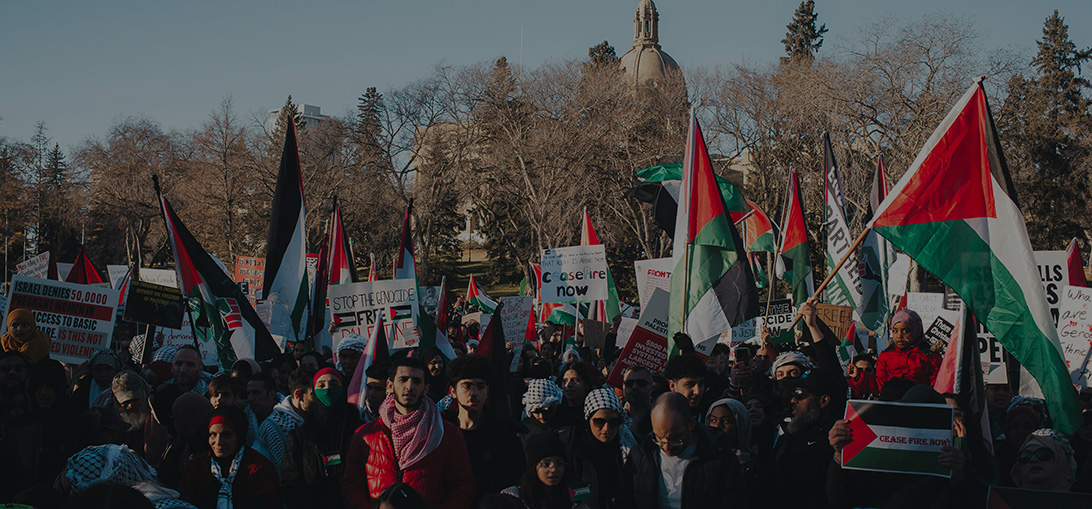
Anticipated Disruption Across North Africa, Europe and North America
Intelligence cut off time 10:00 GMT 14th of May 2024
This Wednesday, May 15, commemorates the 76th anniversary of the Nakba, an Arabic term meaning “catastrophe.” It signifies the expulsion and forced displacement of around 750,000 Palestinian Arabs during the 1947-1949 Palestine War, following the adoption of the UN’s Partition Plan for Palestine, which ended British mandate rule over the territory. This event is profoundly significant historically, marking the onset of the Palestinian diaspora and a pivotal moment in the formation of Palestinian national identity, which persists nearly a century later.
This year, the significance of the commemoration will be amplified due to the ongoing war in the Gaza Strip. The conflict has reached a critical juncture, especially with the recent deployment of Israeli troops into Rafah on May 6th. The conflict, which followed a surprise attack launched by the Gaza Strip-based Hamas terror group on 7 October, and resulted in the killing of approximately 1,200 Israelis, mostly civilians, has entered its seventh month. During this time, over 35,000 Palestinians, mostly civilians, have lost their lives, and nearly two million have been displaced internally. Gaza is grappling with severe famine, a near-total collapse of infrastructure, and extensive destruction of local housing.
A Summary of Possible Risks and Hotspots
This year’s Nakba Day is expected to spark extensive protests and disruptions, especially in North Africa, Europe, and North America. While some events may be sanctioned by authorities or even state-sponsored, there’s a significant risk of clashes with security forces. In regions with substantial pro-Israel support, tensions may escalate between pro-Palestine demonstrators and counter-protesters, potentially leading to property damage targeting individuals associated with either side.
Potential for university disruption
Universities are expected to be significant focal points for civil unrest. Across the globe, student occupations and protests authority have occurred in various academic institutions, notably in France, the United States, and the Netherlands. In Tel Aviv, authorities recently prohibited a planned Nakba commemoration event, potentially triggering anti-government demonstrations and clashes in the city. Student movements, while typically localised, can disrupt city centres in major urban areas.
The risk of terrorism, particularly from self-radicalised individuals or “lone wolves,” presents a significant threat, especially in densely populated urban areas. These lone actors may target large gatherings or individuals and locations with simple weapons like knives or occasionally light firearms. Vehicle attacks are also a possibility, although their effectiveness varies due to anti-vehicle barriers in many city centres.
While organised terror group attacks are less common, they are not impossible. For instance, in Alexandria, Egypt, on May 7th, a Jewish businessman was killed by a group named ‘Vanguards of the Liberation – the Martyrs of Mohamed Salah’, linked to an incident involving an Egyptian police officer killing three Israel Defense Forces (IDF) soldiers in 2023. Attacks by groups are often more sophisticated and may involve improvised explosive devices (IEDs), but they also have a higher chance of being thwarted by authorities compared to lone wolf attacks.
What measures can mitigate risk?
Nakba Day-related disruptions are expected to primarily impact large urban centres in countries that have seen significant pro-Palestine protests. These disruptions are likely to concentrate around government or academic institutions, limiting their scope. Avoiding these areas unless necessary should mitigate physical risks.
However, traffic disruptions, potentially affecting various modes of transportation, are less predictable and could have more widespread effects. While disruptions to airports and seaports are unlikely, protesters may attempt to block roads, particularly around targeted buildings and main traffic arteries leading into urban centres. Even brief disruptions could have lasting effects throughout the day.
To minimise such risks, it’s recommended to schedule travel outside of rush hour and to plan entry into large cities prone to protests for early morning hours. If traveling through city centres is unavoidable, consider alternative routes away from likely protest areas and avoid public transportation.
It’s crucial to stay informed through official channels regarding potential protests, disruptions, and violence. Familiarise yourself with local emergency contacts, including nearby police stations and emergency rooms. When planning business operations, establish clear communication procedures such as two-way messaging networks and GPS tracking to reduce risks to people and assets.
Additionally, having failover systems and strategic redundancies in place can mitigate the impact of severe localised disruptions on primary business operations, although such scenarios are unlikely.
Enhancing resilience and business continuity planning
Solace Global Risk is a leading provider of comprehensive risk management solutions, serving clients globally with a commitment to excellence. Our team of seasoned experts, empowers organisations to navigate complex risk landscapes with confidence and resilience.
Journey Risk Management
Global Security and Threat Intelligence
Risk Management Software
Your duty of care doesn’t end the moment your people set foot in their destination – and neither does ours.
From transfers to ongoing security and emergency evacuations, our travel risk services always have you covered.
Arm yourself with the knowledge to avoid a potential threat from turning into a crisis. Intelligence advisories give you tailored reports to anticipate possible disruptions, mitigate risk and help you make well-informed decisions, faster.
Give your people peace of mind when they travel for work, so they remain focused on the job at hand. We mitigate risks, manage incidents if they occur, and support your people with security advice or help in a crisis.
Speak to a risk management specialist
Alert Plus: US and UK launch air strikes on Houthi targets in Yemen
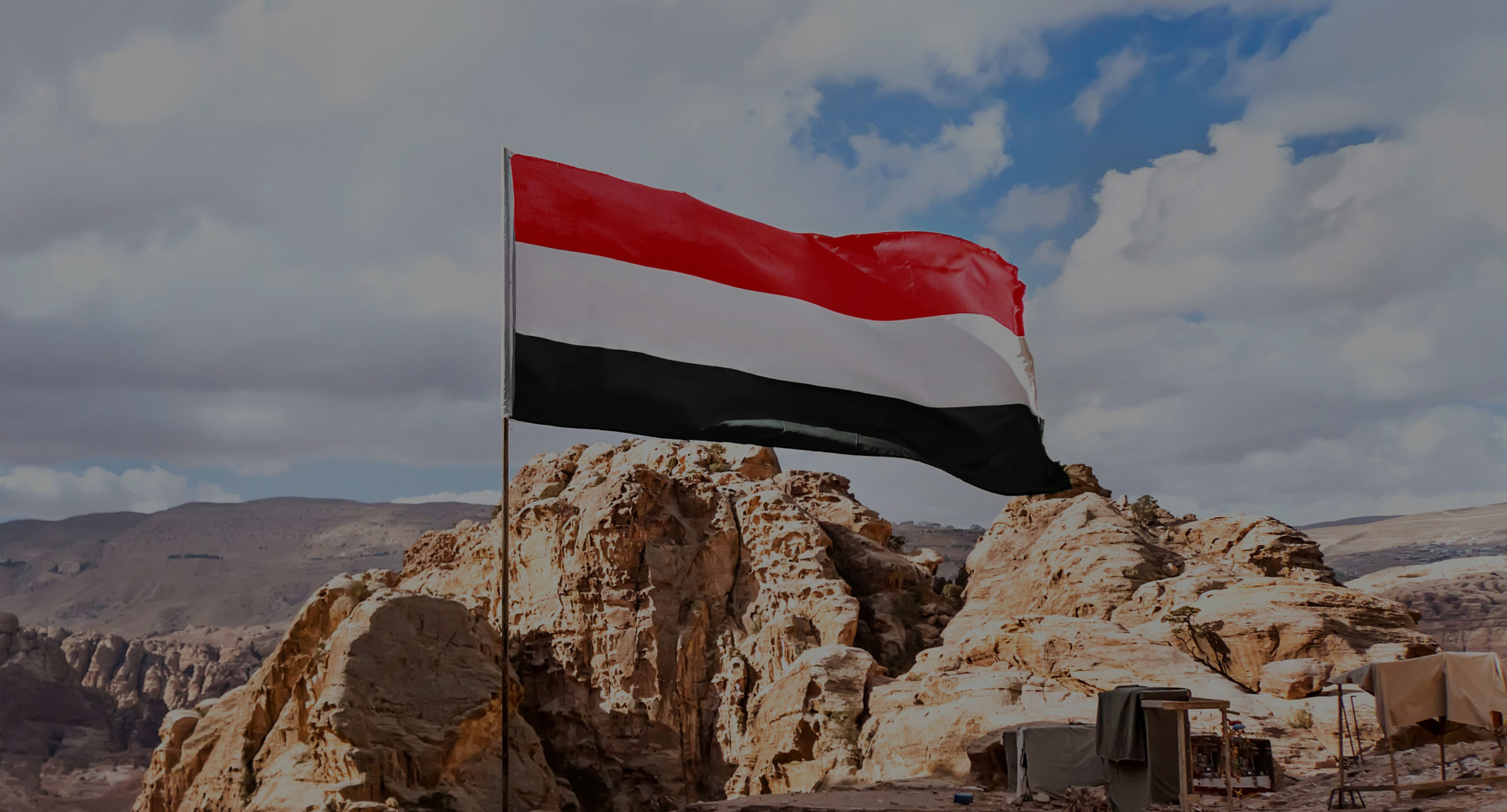
Current Situation of US and UK air strikes in Yemen
Intelligence cut off time 15:00 GMT 12th of January 2024
On the 11-12 January, US and UK aircraft and warships conducted at least 70 strikes on multiple military targets in Houthi-controlled Yemen. Reports indicate that over 100 precision guided munitions were fired on at least 16 Houthi locations. This includes a military base adjacent to Sanaa airport, a military site near Taiz airport, a Houthi naval base in Hodeidah and military sites in Hajjah governorate. Houthi’s stated that five of the group’s fighters were killed in the strikes with six others wounded.
The US Secretary of Defense, Lloyd J. Austin III, released a statement indicating that targeted strikes were conducted on sites associated with unmanned aerial vehicle’s (UAV), ballistic and cruise missiles, and coastal radar and air surveillance capabilities.
Majority of the firepower came from US jets, with the US having the aircraft carrier USS Dwight D Eisenhower already in the Red Sea, as well as air bases in the region. US Navy warships also fired Tomahawk land attack cruise missiles (LACMs), which are GPS-guided and can be programmed to fly evasively. The UK contributed by sending four RAF Typhoons from Akrotiri, Cyprus, carrying Paveway IV guided bombs.
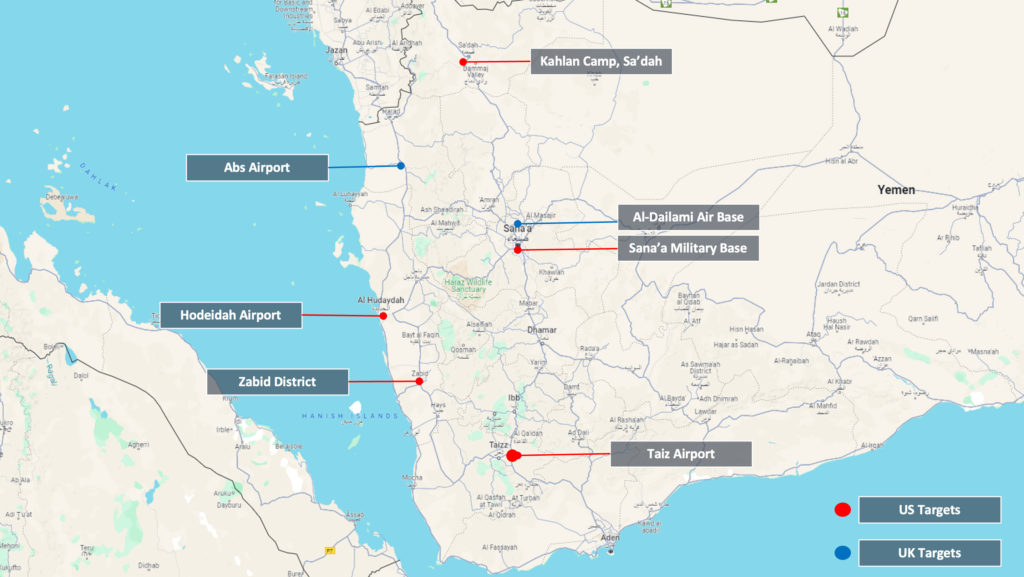
Houthi Response to UK and US Air Strikes in Yemen
In response, the Houthis have stated that they are not deterred by the attacks. The group’s leader, Mohammed al-Bukhaiti, stated that the US and UK would “soon realise” the action was “the greatest folly in their history”. Hezbollah, Hamas, and the Palestinian Islamic Jihad responded by saying that the strikes show Washington and London’s support for Tel Aviv and that the West are now responsible for the subsequent impact on the region’s security. Iran also responded forcefully, expressing that the strikes were a breach of international laws. Saudi Arabia and Jordan did not condemn the attacks but did call for restraint. Several Western nations supported the operation as an attempt to restore the free flow of trade and deter further Houthi attacks.
Who is Behind The Houthi Movement?
The Houthi Movement is an Iranian aligned group that controls much of Yemen after nearly a decade of civil war against a Western-backed and Saudi-led coalition. The two sides are currently observing a tentative ceasefire that officially ended in late 2022 but has remained in place to the current day.
Following the outbreak of the Hamas-Israel conflict, the Houthi’s emerged as a strong supporter of the Palestinian Islamist group. The Houthis began attacks on shipping between the Gulf of Aden and the Red Sea in December 2023, claiming to target vessels linked to Israeli persons, businesses, and interests.
However, this route, which links Europe and Asia and Africa via the Suez Canal, accounts for roughly 15 percent of the world’s shipping traffic. The attacks have forced some shipping companies to limit transits through the waterway, or even cease operations altogether, instead taking the longer route around southern Africa. This has significantly disrupted international commerce, increasing delivery costs and time, stoking fears about a global inflation.
US response to Houthi Attacks on 9th January 2024
In response to the Houthi attacks, the US launched Operation Prosperity Guardian alongside several allies, which aimed to end the blockade and counter all threats by Houthi forces against international maritime trade. The operation was defensive in nature, destroying only missiles launched at vessels with no pro-active strikes conducted. The Houthis continued to fire at merchant vessels, as well as allied naval vessels, dismissing warnings from Washington and London. Then on 9 January, US and British warships shot down 21 drones and missiles, repelling the largest Houthi attack so far.
How will UK and US airstrikes in Yemen affect global stability?
It is highly likely that the Houthi’s largest attack to date on 9 January was the trigger that surpassed the US-UK threshold. While international prices have yet to see a significant impact, Operation Prosperity Guardian was not working as a deterrent. It is highly likely that more extensive, continued Houthi action would force more merchant vessels away from the Red Sea, almost certainly disrupting maritime trade, therefore increasing consumer prices and shortages.
What course of action will the Houthi’s take to retaliate?
In the immediate aftermath, the Houthi’s are highly likely to increase their attacks on commercial and military vessels in the region in retaliation. However, it is likely that their ability to launch missiles and drones has been degraded. Should the Houthis sustain their attacks, it is almost certain that the US and UK will continue their strikes on targets within Yemen. It is also highly likely that the group will be re-designated as a terrorist organisation if they continue. This would have a significant impact on the peace process to end the Yemeni Civil War between the Houthi’s and the Saudi-led coalition, which has continued to progress despite regional tensions.
A breakdown of the process would almost certainly see a resumption of hostilities between the two sides, with locations within Saudi Arabia and the United Arab Emirates likely becoming viable targets for the Houthi’s as evidenced by their previous attacks.
Will the UK and US involvement spark conflict with the Middle East?
Across the Middle East, it is highly likely that Houthi’s allies and other Iranian proxies start to act in solidarity with the group. These groups will almost certainly view the attacks as Western support for Israel.
It is almost certain that Popular Mobilisation Forces (PMF) in Iraq and Syria will continue to target US military bases across the region. It is also likely that the frequency and scale of these attacks will increase considerably. There is a realistic possibility that US military locations that have not been targeted yet in Kuwait, Saudi Arabia, and the UAE, are targeted.
Hezbollah will likely continue to focus its attacks on Israel, however an attack on the US cannot be ruled out. While still unlikely, the US and UK strikes on Yemen have increased the likelihood of a wider conflict developing in the Middle East, as well as the West entering a proxy war with Iran. This eventuality would highly likely take focus away from the conflict in Gaza, almost certainly intensifying the humanitarian situation.
Travel Risk Advice
- Avoid all non-essential travel to Yemen.
- Anyone operating in the region should monitor events from a reliable source in case of a major escalation.
- Key military and political infrastructure inside Sana’a are very likely to remain focal points for violence and demonstrations. You should be particularly vigilant in these areas and follow any specific advice from the local security authorities.
- Avoid US and UK embassies or consulates across the region as these will likely be the epicentres for demonstrations.
- If air-raid or rocket warning sirens are sounded, seek secure shelter immediately, ideally in a purpose-built shelter. If in a building when sirens are sounded, head to a secure room, stairwell or inner room. Close all windows and doors, stay in shelter for ten minutes after the siren ends.
- If hostilities resume between the Houthis and the Saudi-led coalition, key civilian and military installations in Saudi Arabia and the UAE will likely become targets. Avoid these locations if not essential.
- Previous Houthi attacks have targeted major airports. Ensure alternative travel plans have been prepared for, as well as all individuals having comprehensive travel insurance.
- Mariners in the region should proceed with extreme caution, maintaining contact with port and shipping authorities at all times.
- Always follow all instructions and orders from security forces. Where possible, avoid areas of active conflict and remain inside a secure location away from windows.
- Ensure that you always carry personal identification documents. Consider making photocopies of important documents in case of confiscation, theft or loss.Keep these documents separated from the originals.
- Have emergency contact numbers saved on your phone. These should include the local authorities, medical facilities and any consular support. Ensure that mobile phones are charged in case of any losses in electricity.
- If caught in the vicinity of a security incident, seek shelter immediately and leave the area if safe to do so. Continue to adhere to all instructions issued by authorities and obey any security cordons in place.
- Monitor the Solace Secure platform and trusted local media for relevant updates.
More on the recent activity in the region
Houthi Attacks in the Red Sea
Since the start of the Israel-Hamas war, the Houthi Movement has supported the Palestinian cause by targeting southern Israel directly and Israeli-linked vessels on shipping routes in the Gulf of Aden, Red Sea, and the Bab-al-Mandeb.
Houthi Seizure of Merchant Vessel Galaxy Leader
In a brazen incident on 19 November, the Galaxy Leader, a Bahamian-flagged and Japanese-operated merchant vessel (IMO: 9237307), fell victim to suspected Houthi Movement militants in the Southern Red Sea.
Israel-Hamas War 2023
With the incursion into southern Israel by the Gaza-based militant group Hamas over the weekend of 7 and 8 October, this eventuality became a reality, and the region is now on the precipice of a protracted and deadly conflict.
Safegurd your journey with Solace Global
Security Services for Remote and High Risk Areas
We manage the full security lifecycle, from initial security strategy, protection on-the-ground and ongoing overwatch, with advanced risk management software to support compliance and reporting.

Solace Secure: Travel risk management software
Give your people peace of mind when they travel for work, so they remain focused on the job at hand. We mitigate risks, manage incidents if they occur, and support your people with security advice or help in a crisis. With Solace Secure you have everything you need to provide safe passage on a global scale.
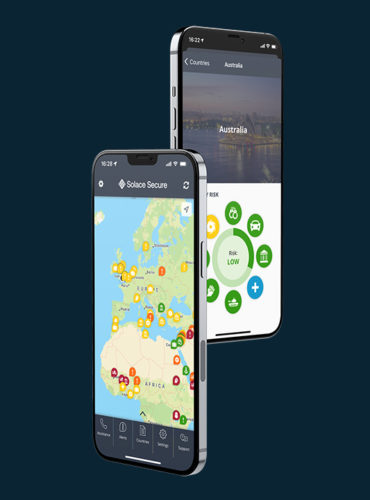
Enhanced Monitoring in High-Risk or Remote Locations
An extra layer of security support can be added with our overwatch monitoring tool on Solace Secure. Our crisis response team support your travel policy protocols and keep eyes on travelling employees check in’s. Should anything go amiss, we can begin response procedures immediately.

Speak to our team about your journey management needs
Security in Dubai, UAE and COP28 Climate Change Summit
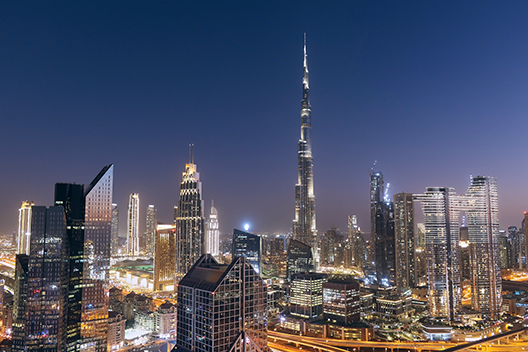
The United Nations Climate Change Summit, COP28 will be hosted in Dubai at the end of the month to bring together global leaders in an effort to take action against climate change.
The Middle East, with its vast energy resources, intricate alliances, and ongoing conflicts, plays a crucial role in the global energy landscape, and the consequences of regional conflicts and geopolitical dynamics in the area have far-reaching implications for the world’s environmental and sustainability goals.
However, in addition to the long-standing geopolitical tensions and conflicts, the Israel-Hamas war holds the potential to heighten tensions and detract from the success of this summit, with the likely possibility of an increasing security risk to Westerners travelling to Dubai.
In this article:
- Security factors during COP28 in Dubai
- Background on Houthi Movement in Yemen
- UAE’s involvement in the Yemen conflict
- Potential for further destabilisation triggered by the Israel-Hamas War?
- Potential outcomes for security in Dubai and UAE
Security factors during COP28 in Dubai
Many Israeli climate organisations have stated that they will boycott COP28 and it is highly likely that Israel will be forced to withdraw from COP28 entirely due to security concerns.
However, COP28 will still attract thousands of Westerners, including many world leaders, diplomats and influential businesspeople. It is likely that COP28 represents an attractive target for terrorist actors due to the influx of foreigners and the international publicity of the event.
On 29 October, the UK’s Foreign, Commonwealth & Development Office (FCDO) issued a warning for British tourists visiting the United Arab Emirates (UAE), indicating an increased threat of terrorist attacks. The advisory warns of a very likely risk of terrorist attacks, which could be indiscriminate and may target places frequented by foreigners. While terror attacks within the UAE and rare and the Emirati counter-terrorist forces are heavily financed and well-trained, there is a realistic possibility that forces will be overstretched as a result of COP28 and that self-radicalisation within the region will increase as a result of the situation in the Gaza Strip.
Background on Houthi Movement in Yemen
In 2004, the Iranian-backed Houthi Movement, otherwise known as Ansar Allah (Supporters of God), rebelled against the Yemeni government with the aspiration of taking control over the entirety of Yemen. The conflict escalated in 2014 when Houthi forces seized Yemen’s capital, Sanna, and forced the Yemeni government into exile. This led to the deployment of a Saudi-led coalition in 2015 that seeks to establish full territorial control by the internationally recognised government within Yemen.
The Saudi-led coalition consists of predominantly Sunni and Arab nations such as the UAE, and is backed by Western powers including the USA, UK and France.
UAE’s involvement in the Yemen conflict
The UAE’s involvement in the coalition has involved a range of military and logistical support for the government of Yemen, including air strikes, the deployment of troops to Yemen and training local Yemeni militias allied to government forces.
The UAE’s involvement in the conflict has made it a target for Houthi forces who have developed an arsenal of long-range drones and missiles facilitated by Iran. Houthi forces have conducted numerous drone and missile attacks on the UAE, typically targeting strategic locations in Abu Dhabi and Dubai, such as airports, ports and oil facilities.
Since 2019, the UAE has significantly reduced its military footprint in Yemen, however it still projects power through its support of a number of militias allied to Yemeni government forces. The Houthis have conducted attacks on the UAE in response to successful military operations by pro-government militias supported by Abu Dhabi, which resulted in a series of high-profile attacks in 2022 against high-profile targets in Abu Dhabi and Dubai.
While the UAE maintains a sophisticated air-defence capability and has been able to shoot down the majority of projectiles within its airspace, it is likely that the Houthis have sufficient drones and missiles to overwhelm and penetrate UAE air defence.
The Houthi Movement have currently been in talks with Saudi Arabia and other local actors regarding a ceasefire.
Potential for further destabilisation triggered by the Israel-Hamas War?
There is a realistic possibility that the Israel-Hamas war destabilises the Middle East, and Iran exploits the situation to order its proxy forces to attack Israeli, Western and anti-Iranian forces and interests throughout the region.
Houthi forces have attempted drone and missile attacks on Israel in response to the Israel Defence Forces (IDF) military activity in the Gaza Strip, with all attacks to date intercepted by IDF or US air defence.
There is a realistic possibility that both Saudi and the UAE will be forced to respond to Houthi attacks which will invariably provoke retaliatory attacks from the Houthis. Moreover, there is also a realistic possibility that the Houthi rebels might seek to exploit the current situation in the Middle East to conduct attacks on the UAE.
In the event of a wider conflict involving Israel, the Houthi rebels could exploit regional tensions to launch missile and drone attacks, engage in cyber warfare, and employ asymmetric tactics against the UAE, aiming to distract or pressure the UAE due to its involvement in regional security initiatives and the Saudi-led coalition.
A further motivation for the Houthis, who are backed by Iran and reportedly allied to Hezbollah, would be to present themselves as defenders of the Palestinian cause and target the UAE for its recent normalisation of relations with Israel and ties to the West.
Potential outcomes for security in Dubai and UAE
If the Israel-Hamas conflict is not contained and provokes a US retaliation, the Supreme Leader of the Houthi Movement has issued a statement declaring that they will respond with drones and missiles, and with the Al Dhafra Air Base located just to the south of Abu Dhabi, it is highly likely that Houthi forces will attempt to target the US military and US interests within the UAE.
For those travelling on business to UAE or will be attending COP28, Solace Global Risk facilitate safer travel for corporate travellers, executives and private clients, with travel risk assessments and end-to-end secure journey management.
Security solutions include intelligence and advisory, latest security alerts through Solace Secure, security trained drivers and airport meet and greet.
Our Journey Risk Management Solutions
Speak to our team about your journey management needs
Israel’s Military Strategy and Biden’s Visit
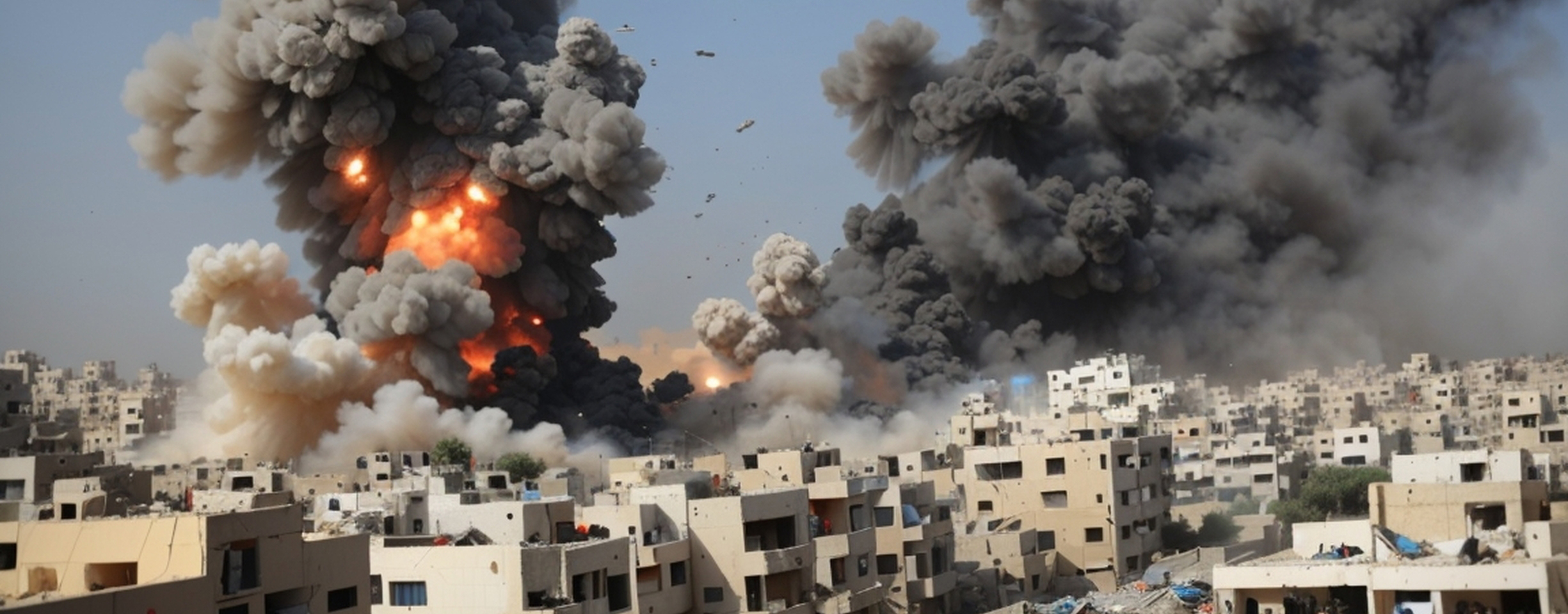
Current Assessment of Israel Hamas Conflict
Intelligence cut-off time 11:00 GMT 17th of October 2023
Whilst it remains almost certain that the Israeli Defence Forces (IDF) will commit to a ground offensive in the Gaza Strip, this is unlikely to occur within the next 24-48 hours.
The main factor contributing to the postponement is the recent revelation of President Biden’s visit to Israel for discussions with Israeli Prime Minister Benjamin Netanyahu on Wednesday 18 October. It is highly unlikely that the US will sponsor an IDF invasion while President Biden is within Israel due to the threat associated with Hezbollah retaliation from Lebanon, which will almost certainly be backed by the Iranian regime, or from one of the other militant groups operating out of the West Bank. It is estimated that Hezbollah alone has amassed a stock of over 150,000 rockets. While most of these rockets are crude and unguided munitions that range out only to 10-40km, Hezbollah also maintain a stock of more sophisticated Iranian-derived rocket and missile systems such as the Fateh-110 (250-300km), SCUD-B/C/D (300-550km) and the Zelzal 1/2 ballistic missiles (125-250km). Such weapon systems enable Hezbollah to target high-value targets such as Ben Gurion airport with a high degree of accuracy. While it is expected that Israel’s Iron Dome air defence system will detect and intercept the majority of rockets, there is a realistic possibility that Hezbollah could launch missile and rocket salvos large enough to overwhelm the air defence system.
Given the missile and rocket threat posed by Hezbollah and the fact Hamas have now likely fired the majority of their rockets, there is a realistic possibility that the IDF will be forced to reposition mobile elements of its Iron Dome system to counter the emerging threat in the north.
Iran’s Involvement with Israel Hamas Conflict
Iran has warned that its proxy forces will conduct “pre-emptive action” in response to Israel’s retaliatory strikes on Gaza, which will invariably include the use of Hezbollah forces. However, it is unlikely that Hezbollah will conduct any major attacks with President Biden in Israel for fear of a major US retaliation.
Moreover, it is more likely that Hezbollah and Iran will wait until Israel commits forces to Gaza as the IDF will have a considerable amount of its forces fixed in the south, offering a tactically advantageous position to open up a northern front that will almost certainly stretch IDF forces and complicate Israeli re-supply and sustainment. To counter Iran and its proxies’ threats, the US has moved its USS Gerald Ford led Carrier Strike Group (CSG) 12 into the Eastern Mediterranean and has deployed a second CSG led by the USS Eisenhower to the Mediterranean which is currently in the eastern Atlantic and is expected to enter the eastern Mediterranean in the next couple of days. The combined combat power of two US CSGs will provide Israel with overwhelming air superiority should the US enter into a conflict with Israel, with warnings already issued to Iran that the US will engage Iranian proxy forces. It is highly likely that Israel will delay a ground offensive until the USS Eisenhower is positioned in the eastern Mediterranean.
Expectations for Biden’s Visit to Israel
It is expected that Biden will discuss with Netanyahu the evacuation of civilians from the Gaza Strip through the Rafah crossing with Egypt. It is likely that Biden will demand that a humanitarian corridor is established before IDF forces enter Gaza, with Biden also forecasted to visit Egypt where he will likely use diplomatic pressure to demand the same from Egypt. It is likely that the IDF will want to commit forces sooner rather than later as any delay will afford Hamas and other militants to prepare defensive positions and mobilise forces. However, Israel is hugely dependent on US military aid which currently stands at approximately USD 4 billion per annum. It is unlikely that Israel has weapon stocks high enough to sustain military operations whilst maintaining enough weaponry to counter Hezbollah or deal with a wider conflict. Therefore, it is likely that Israel will have to submit to US requests in order to guarantee the delivery of future military aid and will not commit to a ground offensive until Biden has some reassurances from Tel Aviv.
Alternative Analysis
Hezbollah, under orders from Iran will launch a pre-emptive attack on Israel prior to the arrival of President Biden. Such a move will provoke Israel into retaliating and committing to a ground offensive in Gaza before the Rafah crossing is opened and civilians are evacuated, causing an acute humanitarian crisis. This will undoubtedly provoke much international condemnation, resulting in anti-Israeli protests and rhetoric and potentially force the West to temper its support of Israel.
Solace Global Security Within Israel
Whether you are considering an evacuation or seeking to continue operations while ensuring the safety of your team, we are here to assist.
For those seeking a secure exit from Israel, Solace Global offers comprehensive journey management services:
- Private Charter Flights: Flight options are available to various destinations across Europe.
- Secure Ground Transportation: Secure movement within Israel, ensuring access to open land borders and maritime evacuation points.
- Armed or unarmed English-speaking security-trained drivers, Close Protection Officers (CPOs), and discreet, low-profile vehicles at your disposal.
Alert Plus: Jerusalem Explosions
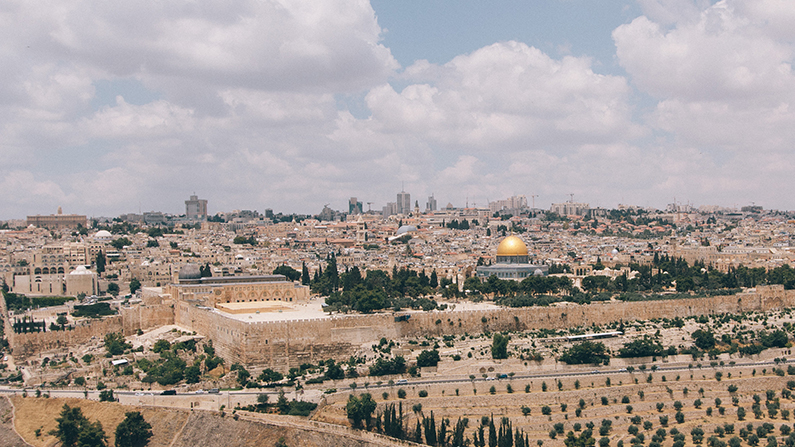
Situation Summary
On 23 November at around 07:00 to 07:30 local time, two explosions impacted the city of Jerusalem. Both explosions occurred at bus stops located in the Givat Shaul (stop ID: 647) and Ramot Junction (stop ID: 4009) entrances to the city. The geolocated site of the Givat Shaul explosion is situated less than 2km from the Knesset and Supreme Court, whilst the Ramot Junction explosion occurred close to the Ramot Alon Jewish settlement.
At least one person was killed and 17 people were injured during the first explosion at Givat Shaul, whilst the second explosion at the Ramot Junction injured a further five people and damaged a public bus located in the area. The Shaare Zedek Medical Center and Hadassah Mount Scopus Medical Center received injured persons from the twin explosions. The individual killed in the combined blasts has been identified as Aryeh Schopek, a 16-year-old Canadian citizen who lived in the Har Nof neighborhood of Jerusalem and attended a local yeshiva.
Initial reports indicate that two improvised explosive devices (IEDs) concealed in bags were responsible for the explosions. Both bags were left at bus stops during the busy hour of the early morning commute. Israeli police later confirmed that the explosions were being treated as a suspected combined terror attack conducted by a “Palestinian” individual or organisation. No independent verification of the claim of suspected Palestinian responsibility for the attack was immediately identifiable.
Police Commissioner Kobi Shabtai confirmed that an investigation into the attack was underway and did not rule out the possibility of multiple suspects. New anti- terror measures were also announced in the aftermath of the attack, including the deployment of police officers with sniffer dogs to all buses in Jerusalem to search for any as-of-yet undiscovered IEDs. Road closures have also been implemented, including a suspension of incoming traffic along Highway One which connects Jerusalem and Tel Aviv.
Outgoing Prime Minister Yair Lapid organised a national security meeting in Tel Aviv at 12:00 local time in response to the attack. Benjamin Netanyahu, the former and incoming prime minister, called for a “strengthening [of] the hands of the security forces” engaged in front-line anti-terror operations in the aftermath of the attack.
Solace Global Comment
Attacks on civilian infrastructure occur with some frequency in Israel, and buses have been targeted on multiple occasions over the past three decades. In 2022 alone, multiple terror attacks have occurred in Israeli territory, such as a mass shooting at a bus stop in Hadera in March, a mass stabbing and vehicle-ramming attack in Beersheba in March, a mass shooting in the Bnei Brak district of Tel Aviv in March, and a mass stabbing in El’ad in May. Palestinian and Islamist terror groups are often attributed with responsibility for many of these attacks, even when there is no official claim.
Though no group or organisation has claimed responsibility for the combined attack in Jerusalem, public attention has turned to Hamas. Mohammad Hamada, a Hamas spokesperson, issued a statement claiming that the “coming days will be intense and more difficult for the enemy” and that “the time has come for the creation of cells that are spread all over Palestine”. The discovery of an IED at the light rail tracks near the Jerusalem Central Bus Station during the evening hours of 22 November has raised concerns that the twin bomb blasts may have originally been intended as a triple, or even larger, attack. Further attacks remain likely in the short term.
At the time of writing, police reports indicate that the IEDs used by those responsible for the combined attack were packed with nails and likely remotely detonated. This method increases lethality despite the likely low-yield of the IEDs themselves, impacting civilians and surrounding infrastructure with metallic shrapnel. Security forces are certain to engage in an extensive investigation into the attack, and Israel Defence Forces (IDF) incursions into both Gaza and the West Bank are almost certain to occur in the short- term as Israeli authorities seek retribution for the terrorist incident. The explosions came as Netanyahu finalizes agreements with allies to form a new right- wing government that is set to include members of religious and far-right parties. Itamar Ben-Gvir, the head of the Otzma Yehudit political party and Netanyahu’s pick to be the next Minister of Public Security, visited the scene of the first attack and endorsed an aggressive response, calling for the government to “lay siege” to the culprits “even if it’s in the West Bank”. Ben-Gvir’s comments also endorsed house-to-house searches to locate those responsible for the attack with the intention of restoring the “deterrence power” of the Israeli government.
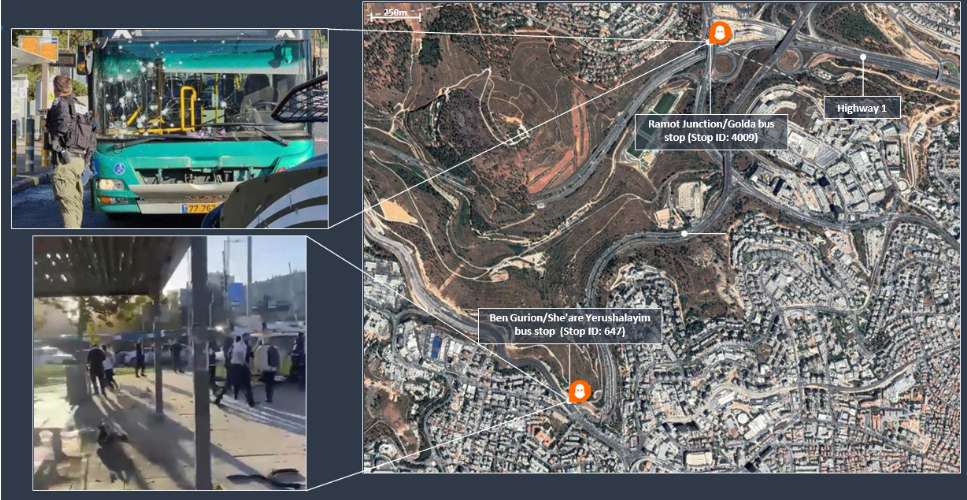
Solace Global Advice
- In the event of a terrorist attack those in the area are reminded to RUN – HIDE – TELL – FIGHT
- Israel has a high risk of terrorism. Further attacks remain likely in the short term, although the presence of additional security force personnel in Jerusalem will likely mitigate the risk of follow-on attacks in the immediate term
- Individuals with planned travel to Jerusalem are advised to reconfirm itineraries and expect localised travel disruption, particularly in the immediate vicinity of the incidents
- Travellers are advised to avoid the immediate vicinity of Givat Shaul and Ramot Junction as emergency services remain on the scene to conduct their investigations
- Further terror attacks in Jerusalem are likely to be indiscriminate, using explosives, bladed weapons, vehicles, and firearms to target crowded areas, government or security force installations and personnel, civilians, transportation networks, the Old City, and other high-profile locations including sites of religious significance
- Locations where large groups of residents or tourists are known to gather are at higher risk of attack. You should be particularly vigilant in these areas and follow any specific advice or guidance from the local authorities or security personnel
- Exercise increased caution, remain vigilant, be aware of your surroundings and report any suspicious activity or items to security personnel as soon as possible
- If caught in the vicinity of a security incident, seek immediate hard cover from any incoming gunfire or explosions and leave the area if safe to do so. Continue to adhere to all instructions issued by authorities and obey any security cordons in place
- Monitor the Solace Secure platform and trusted local media for updates

